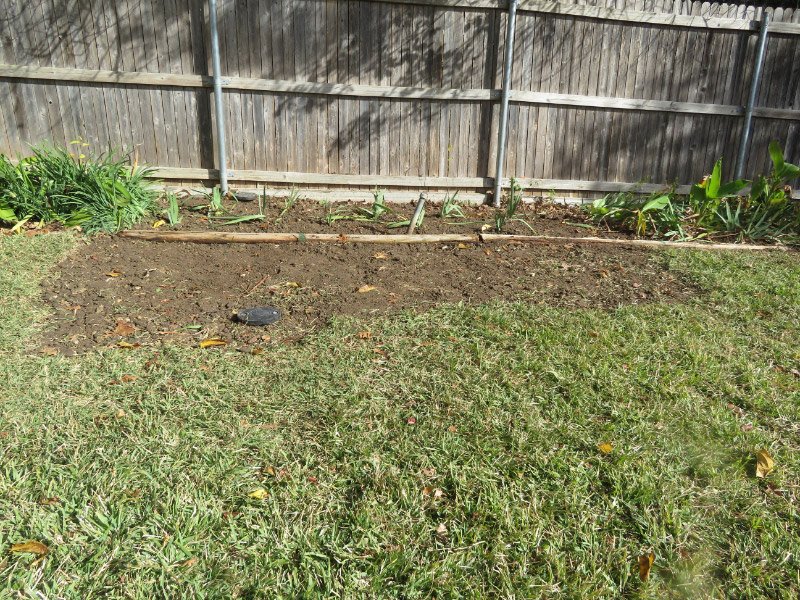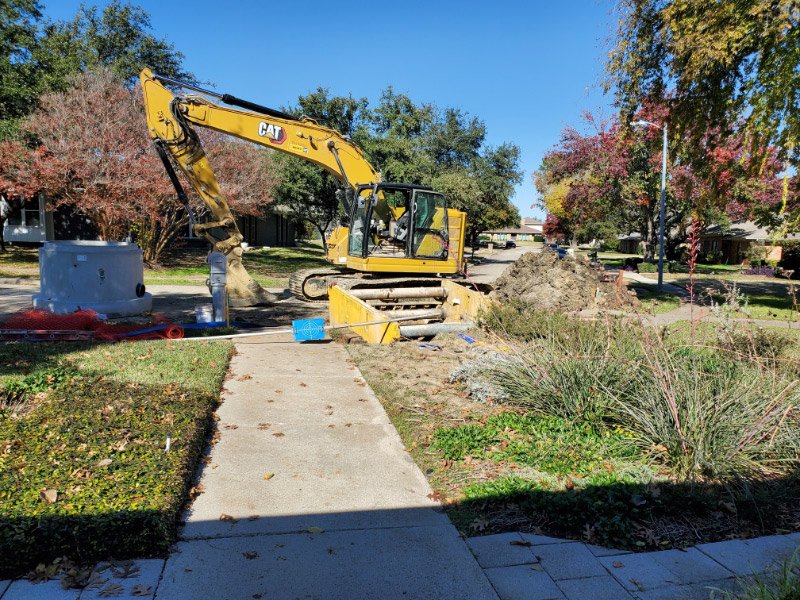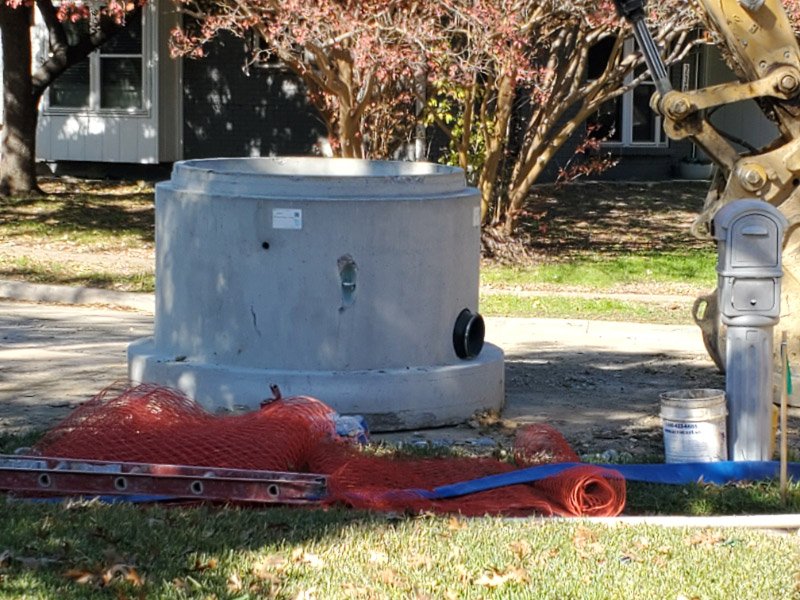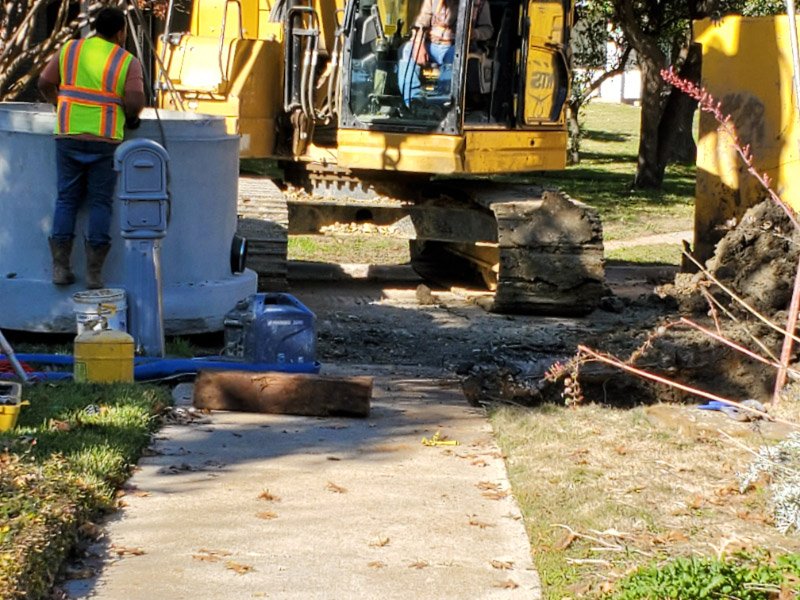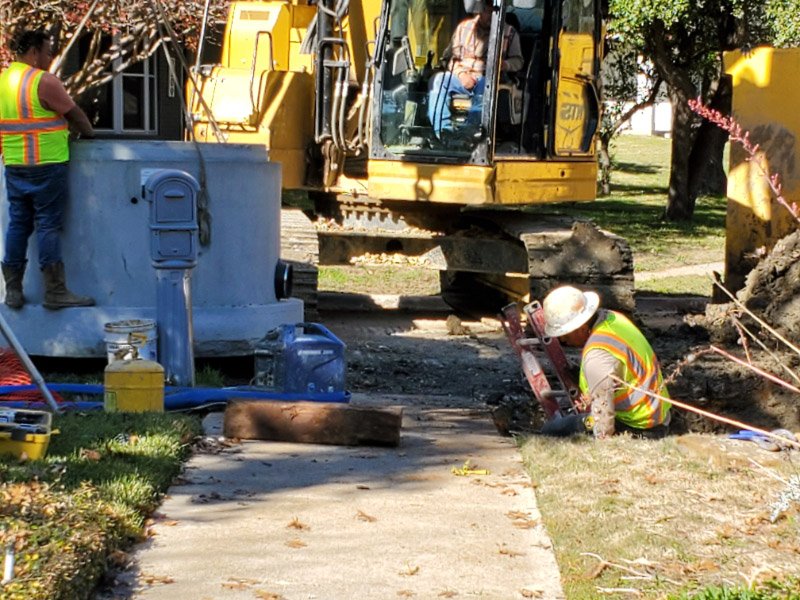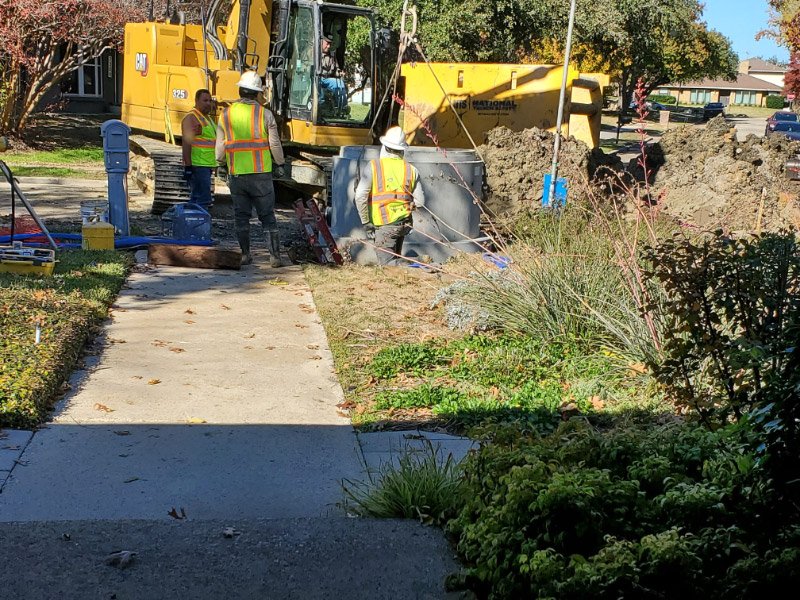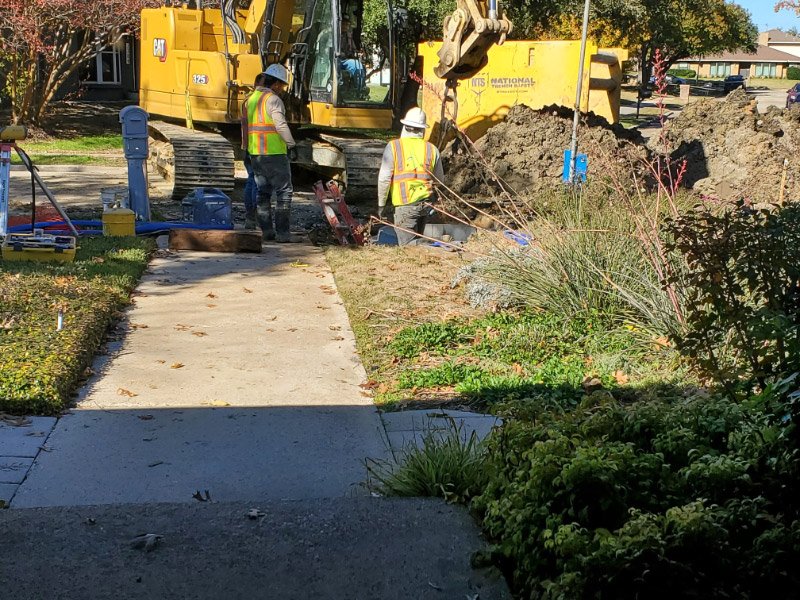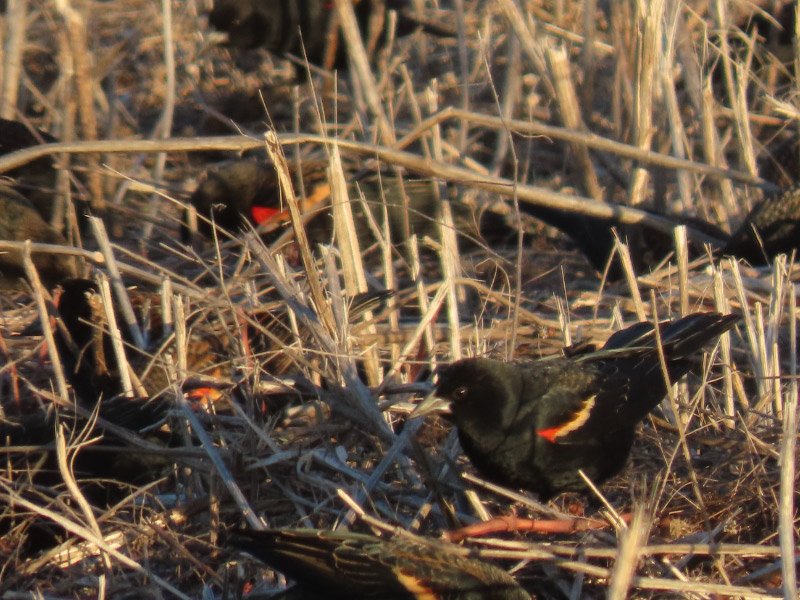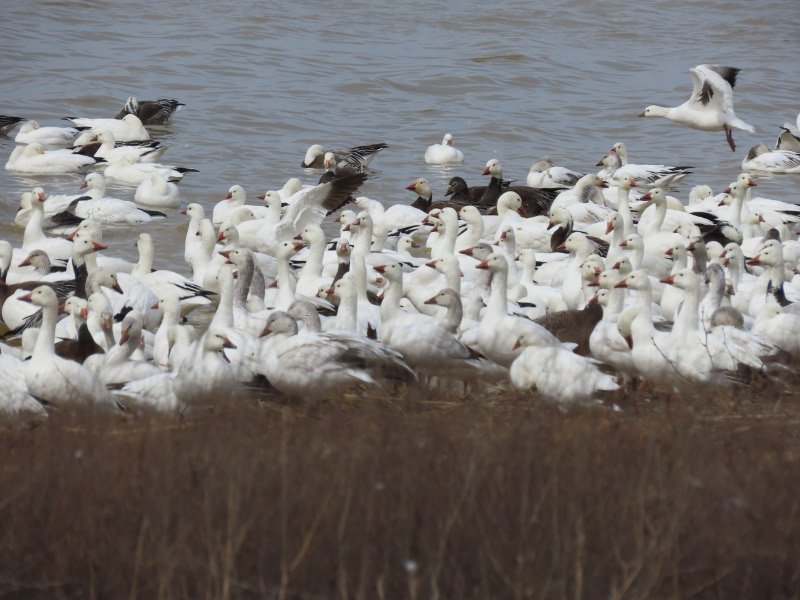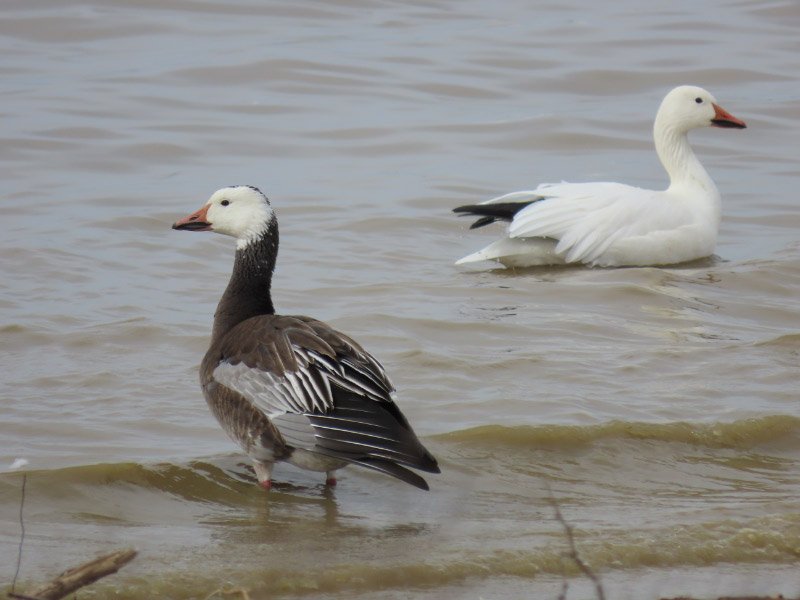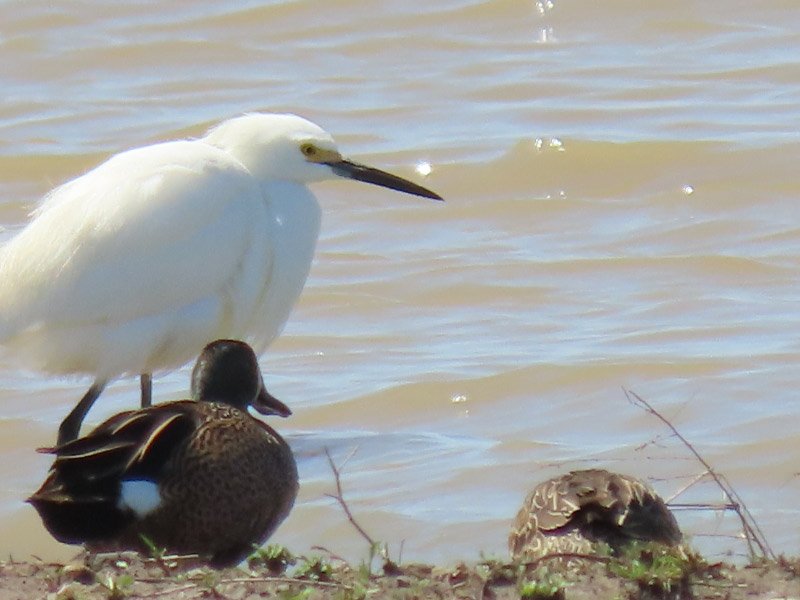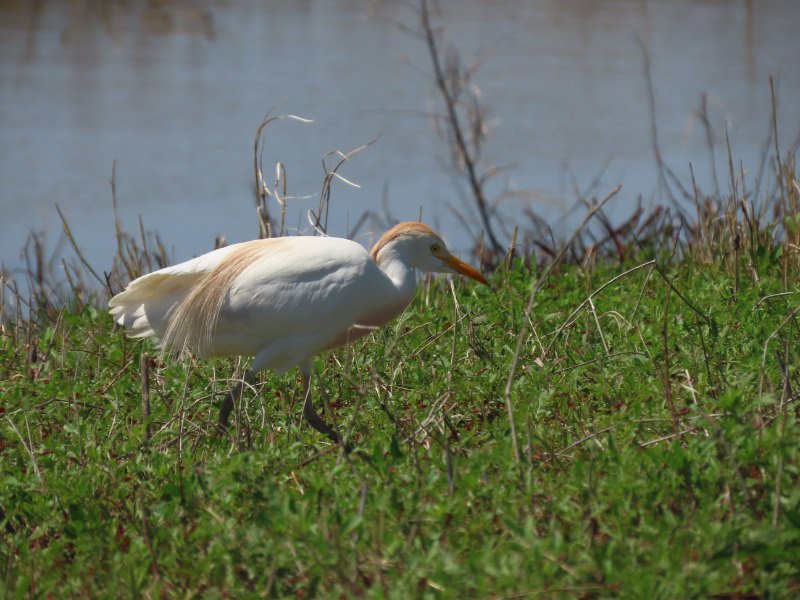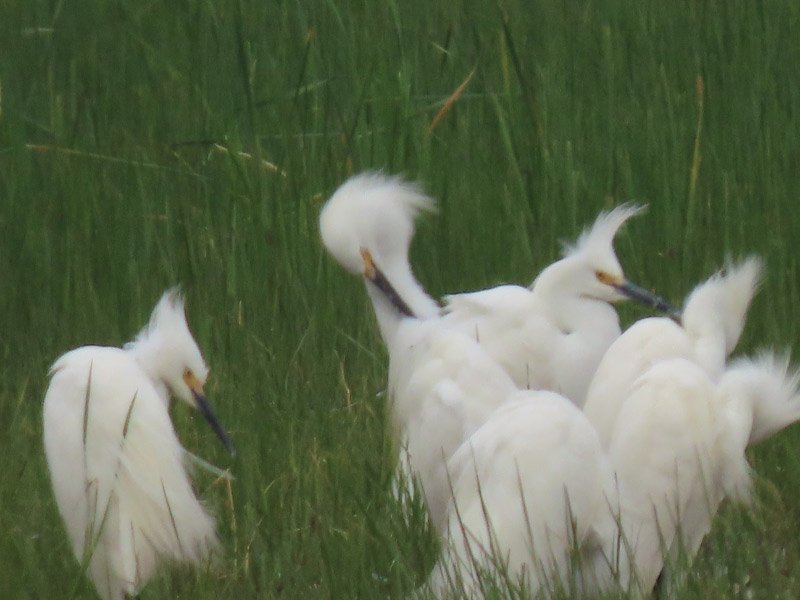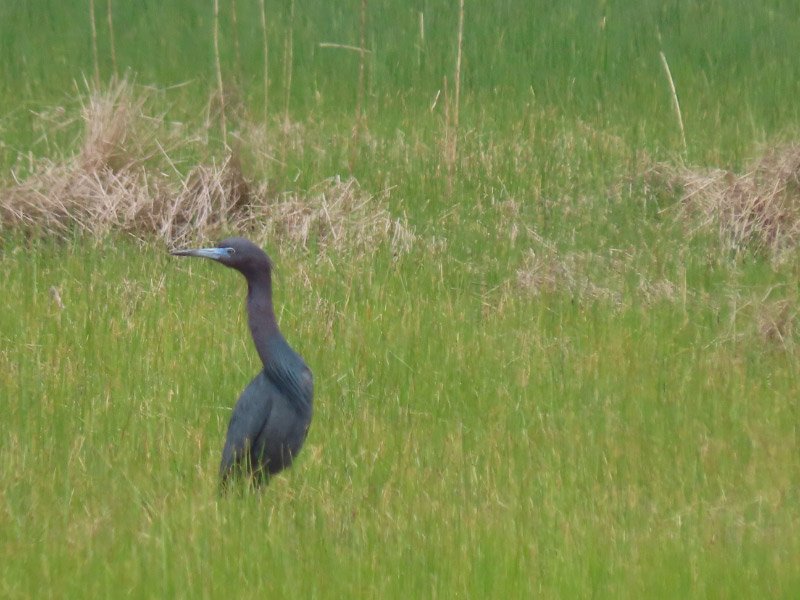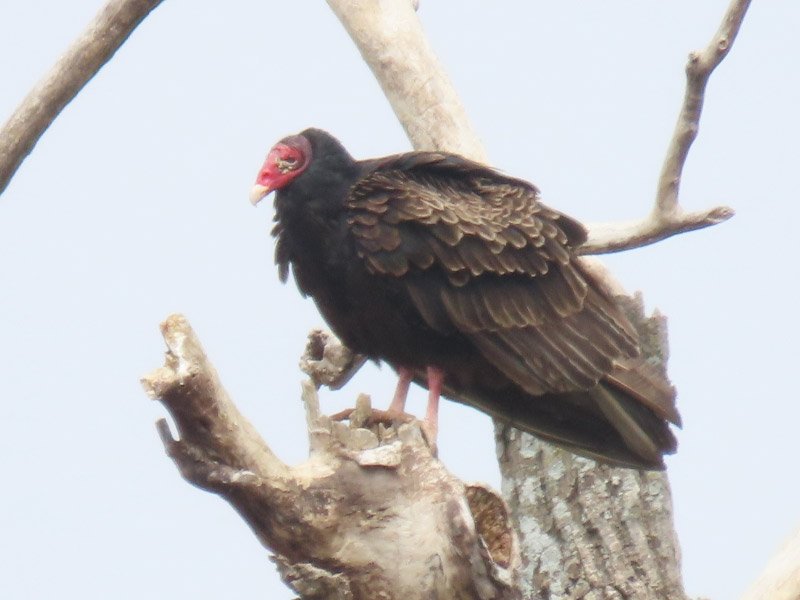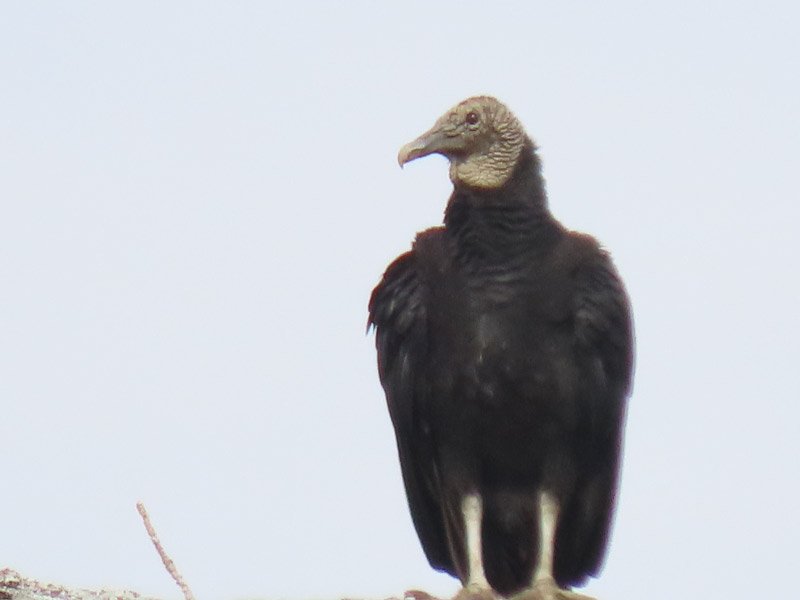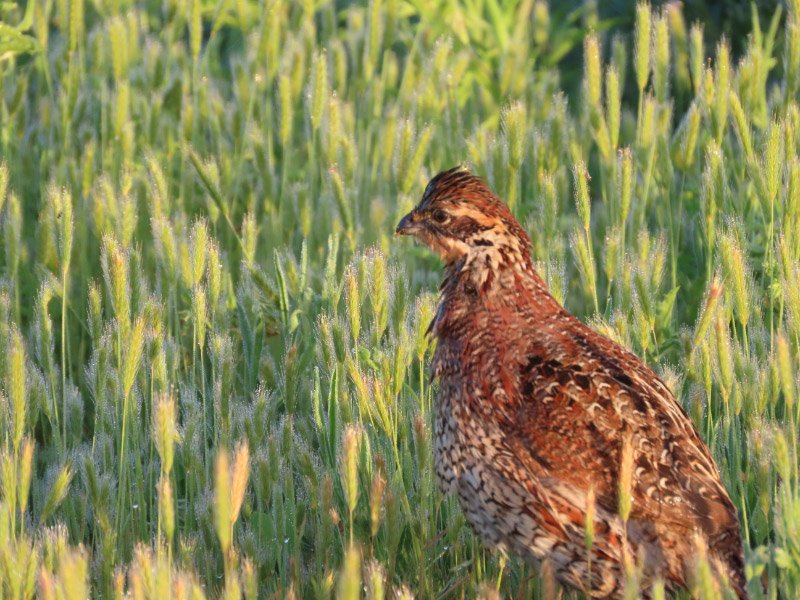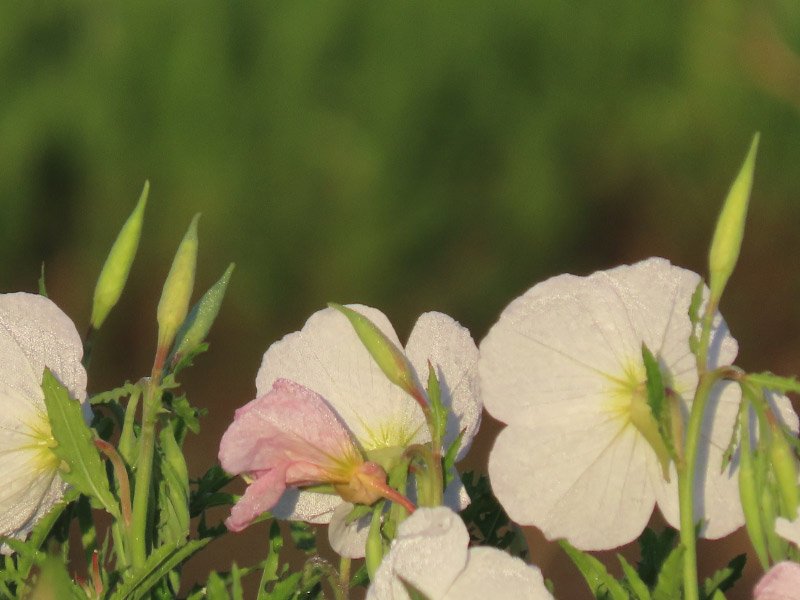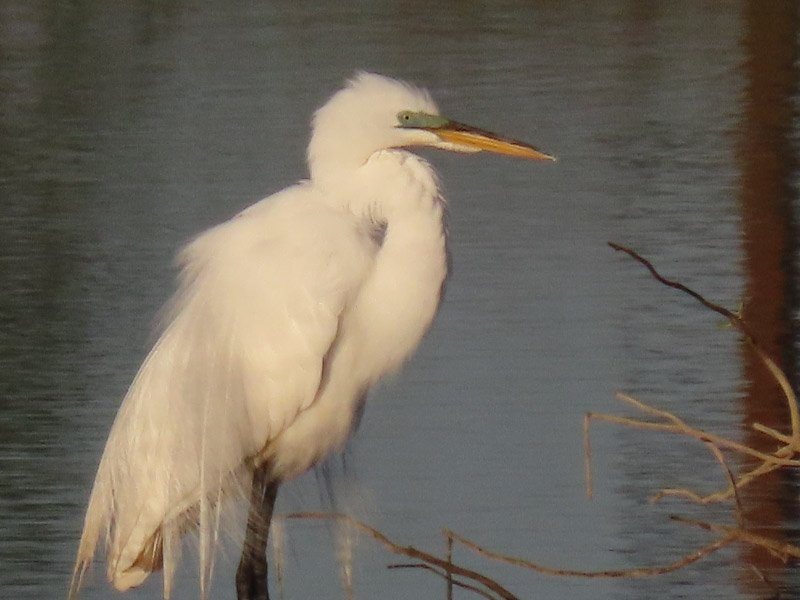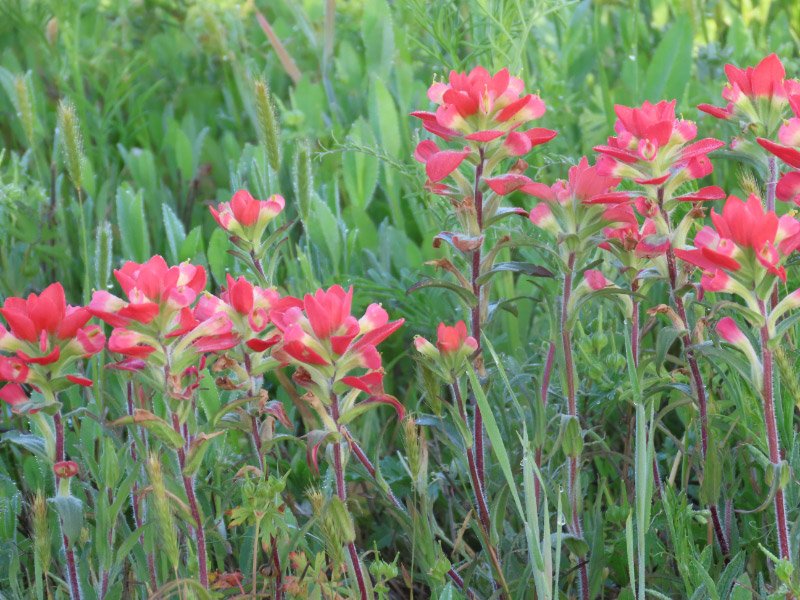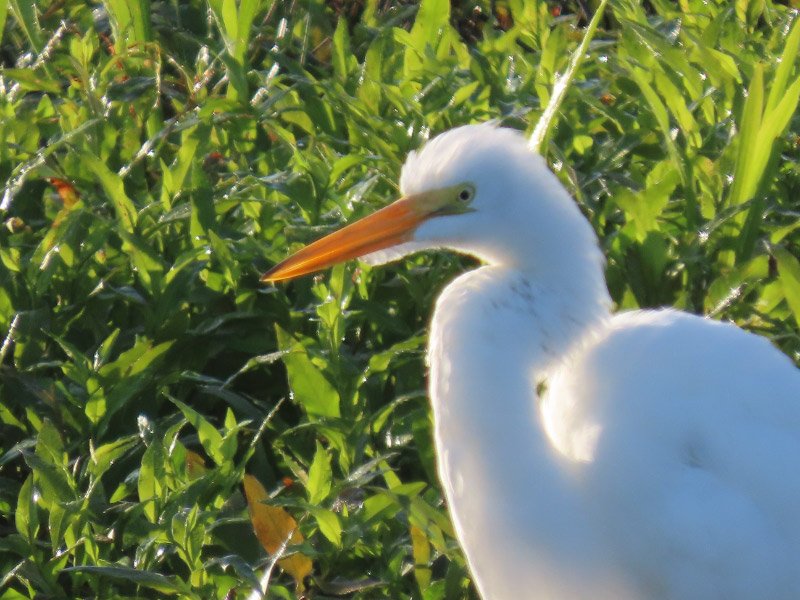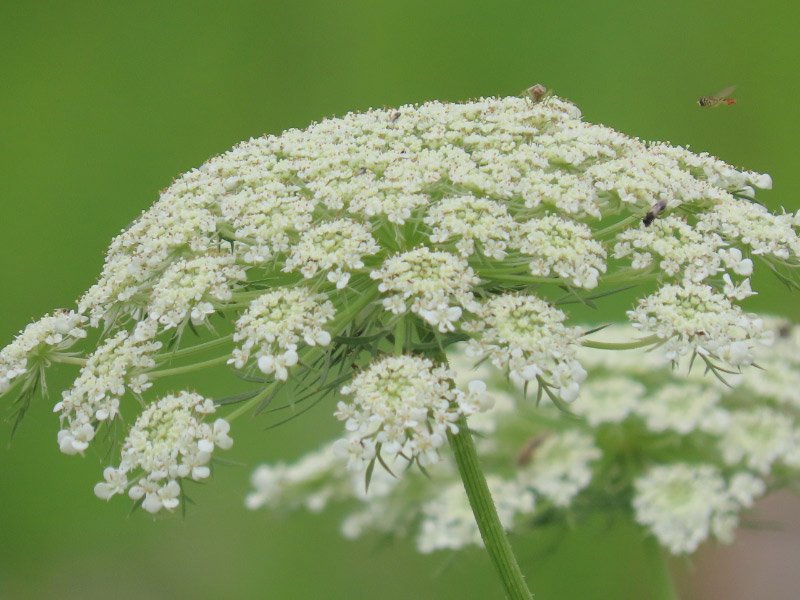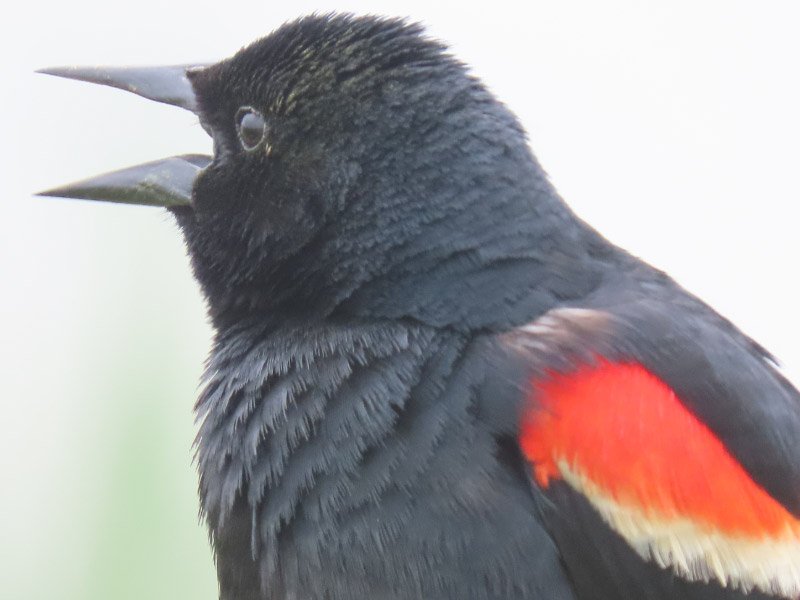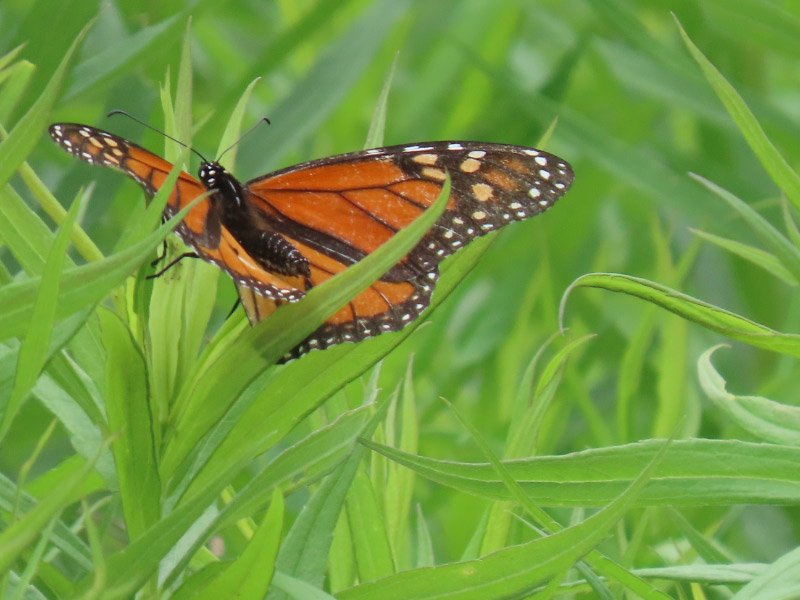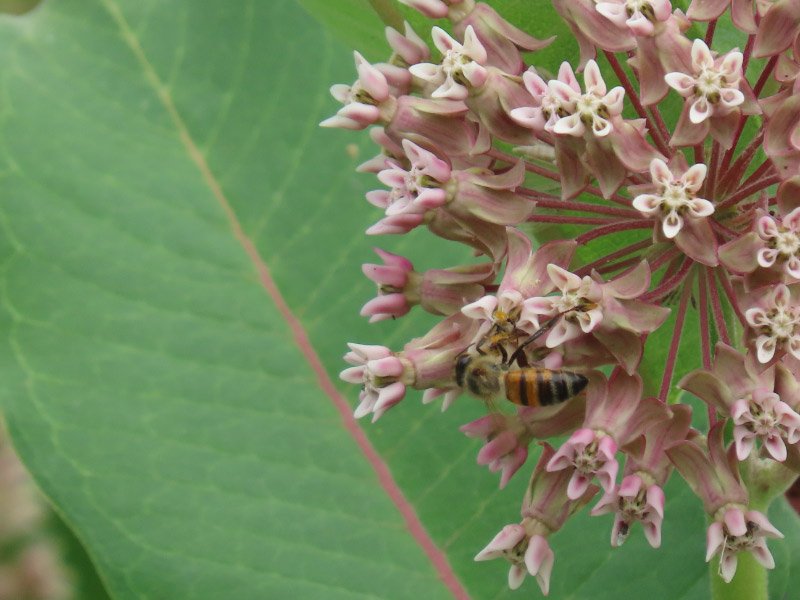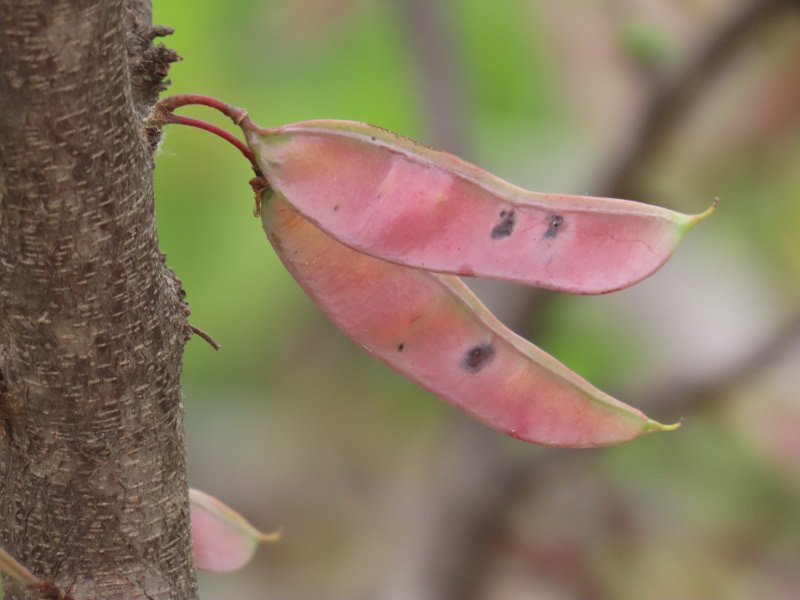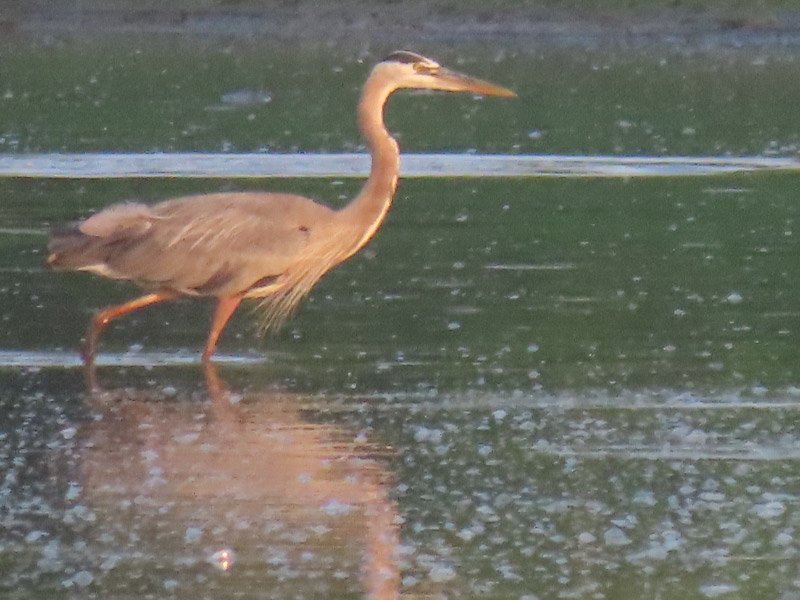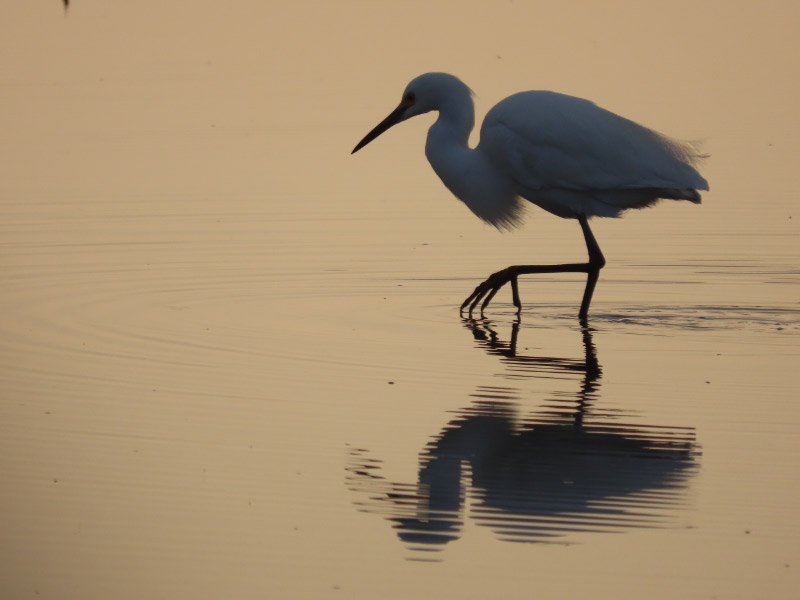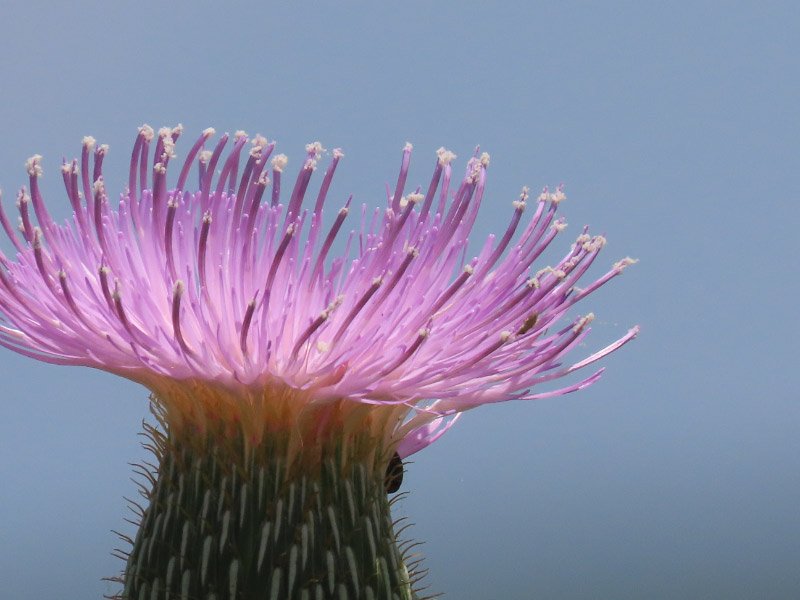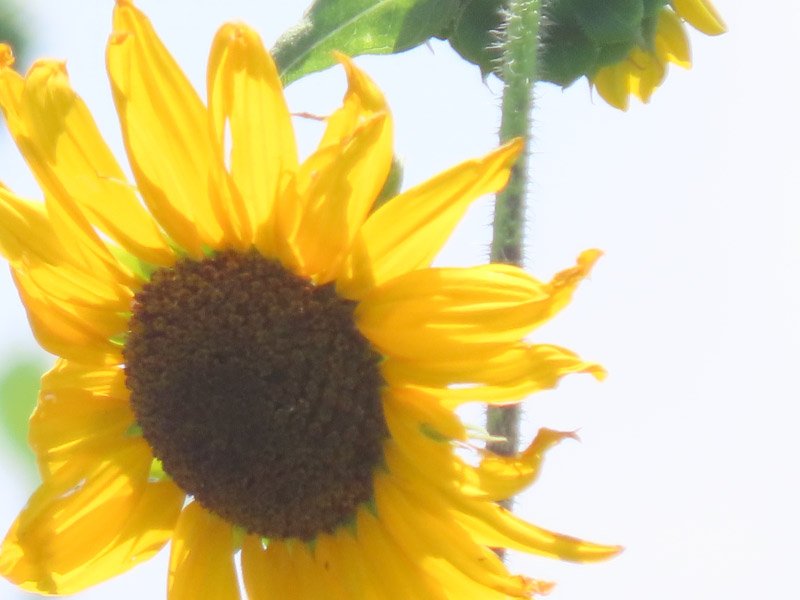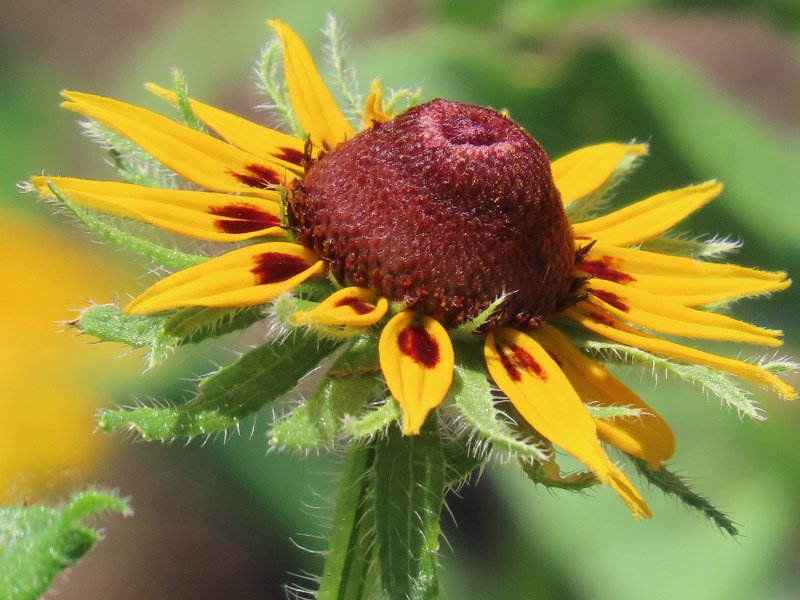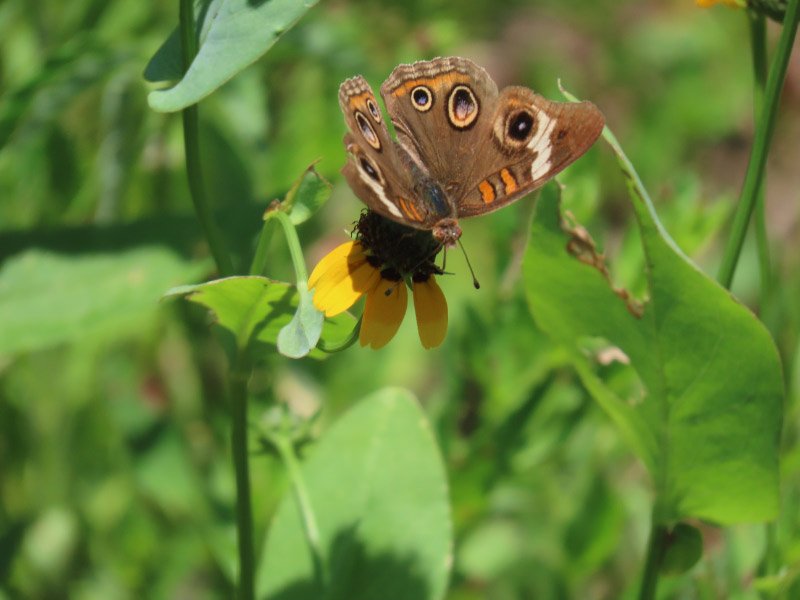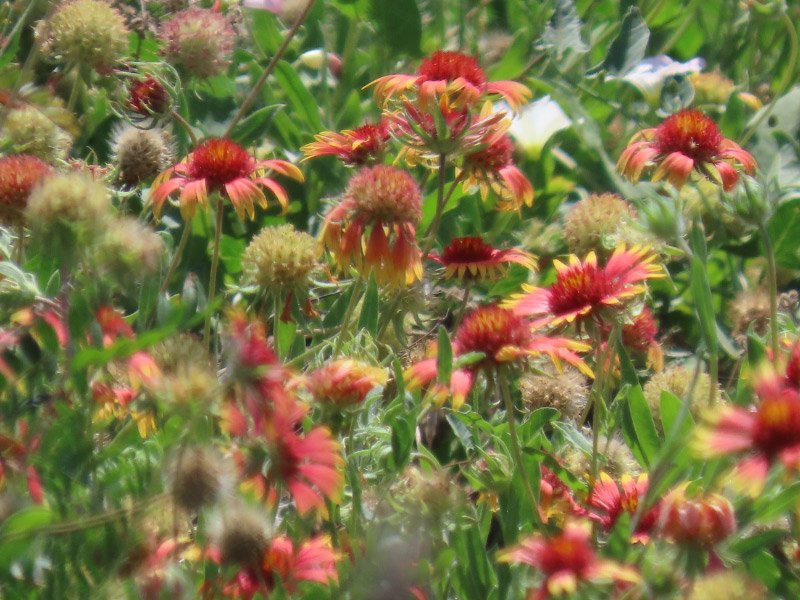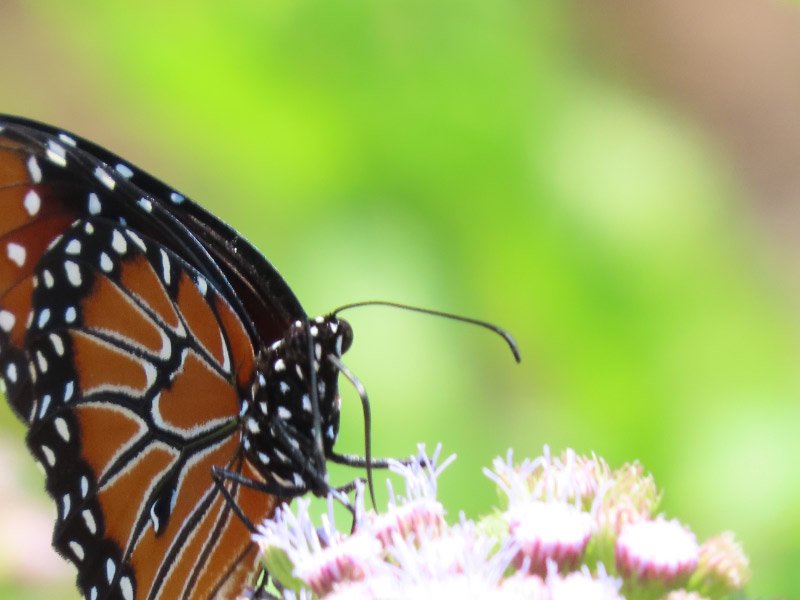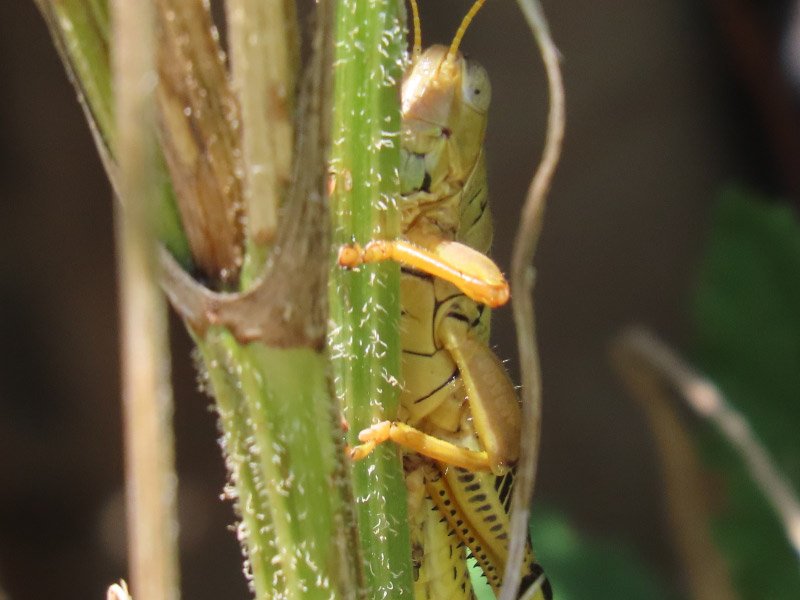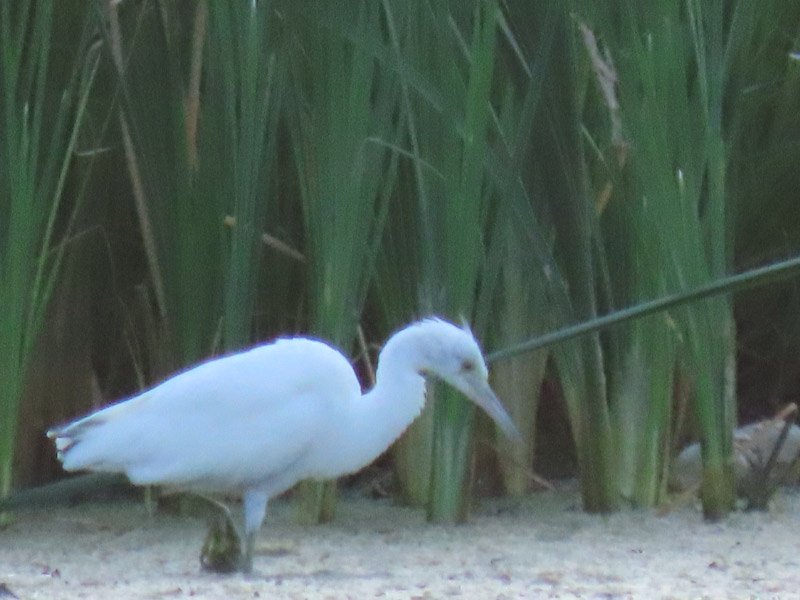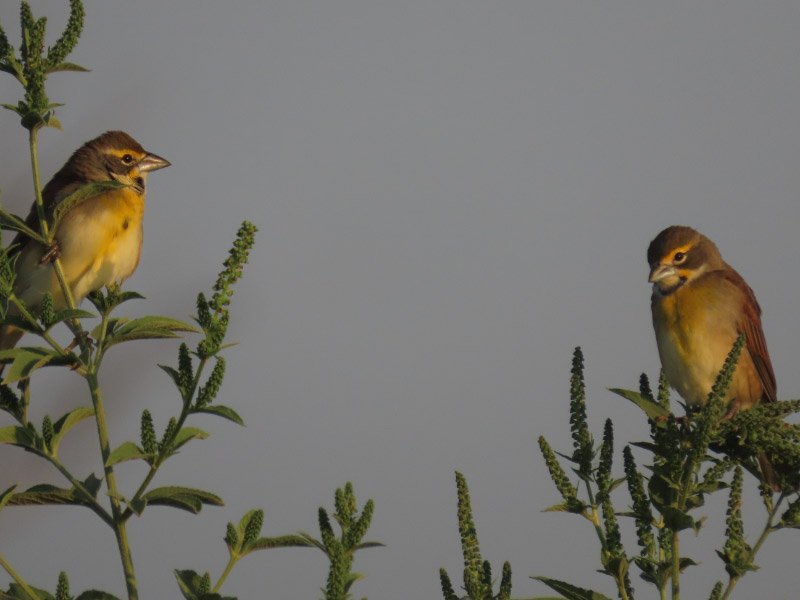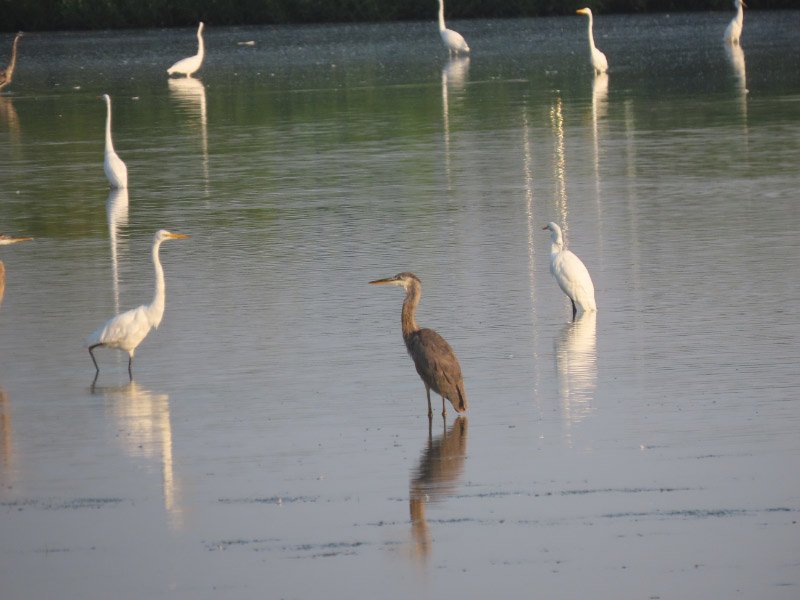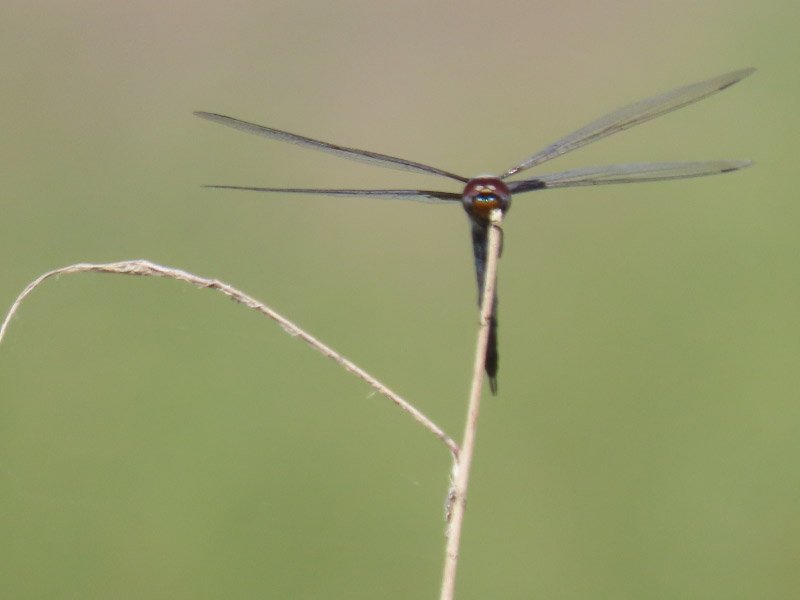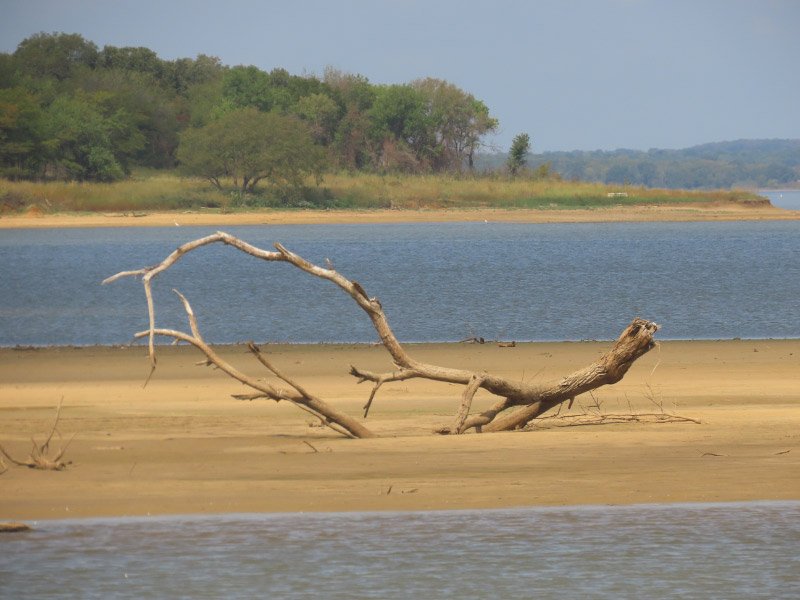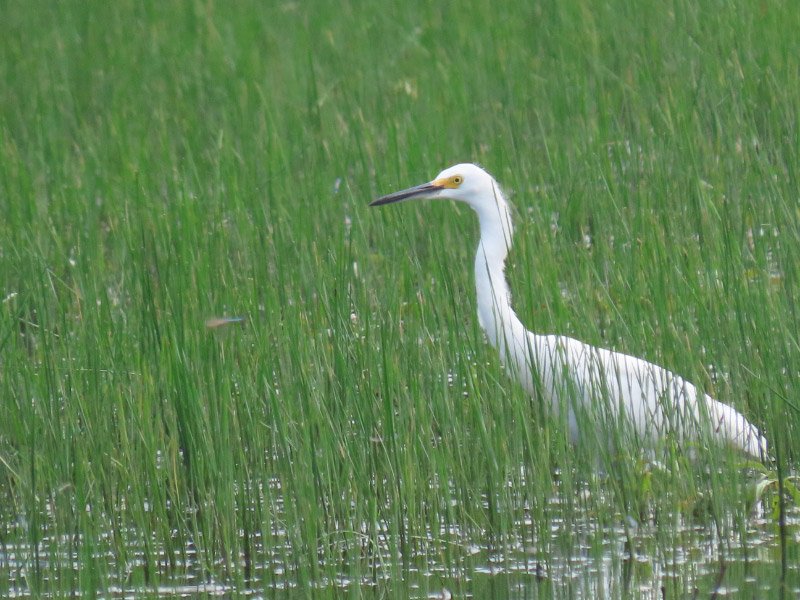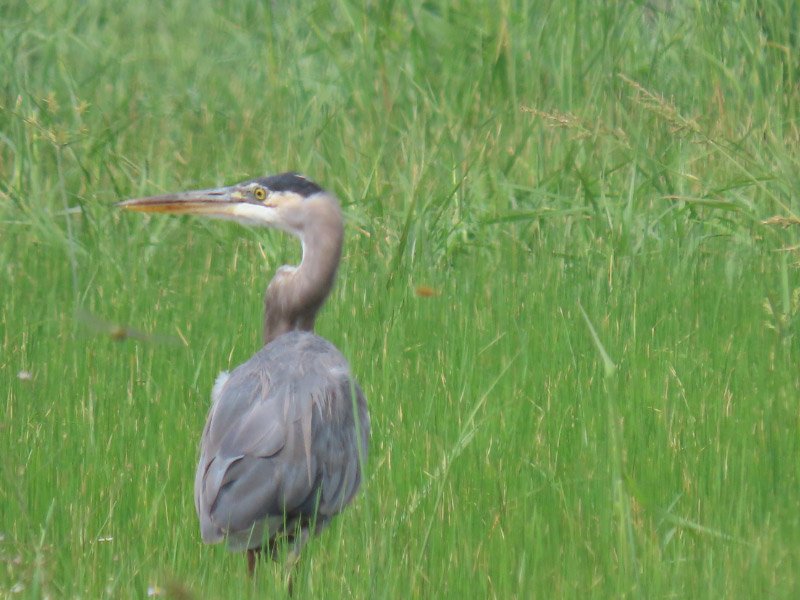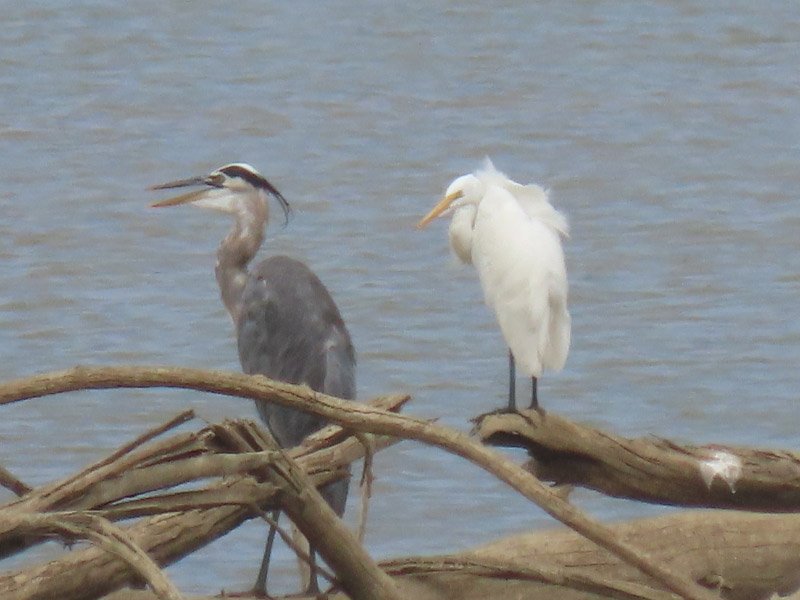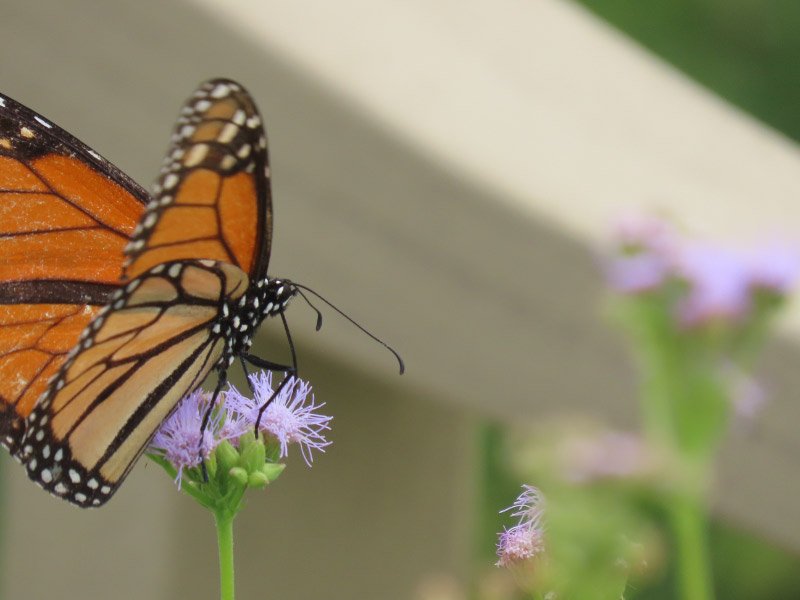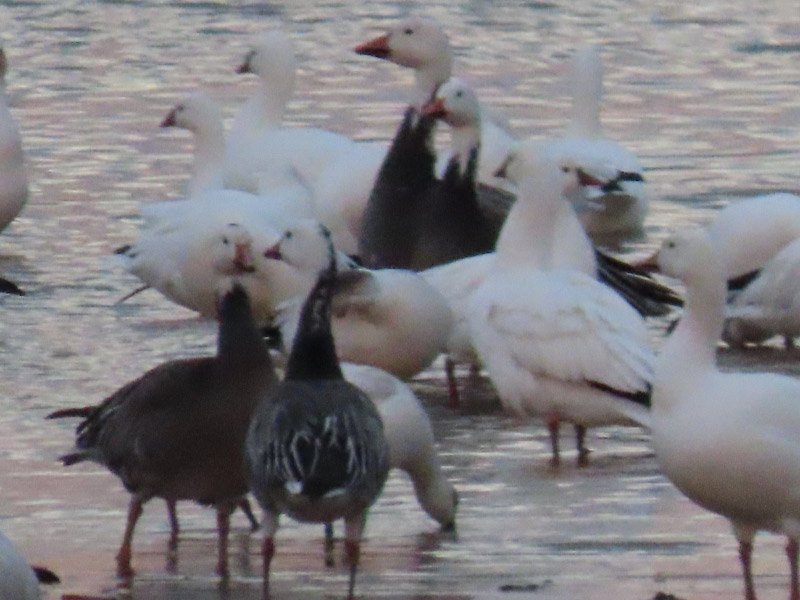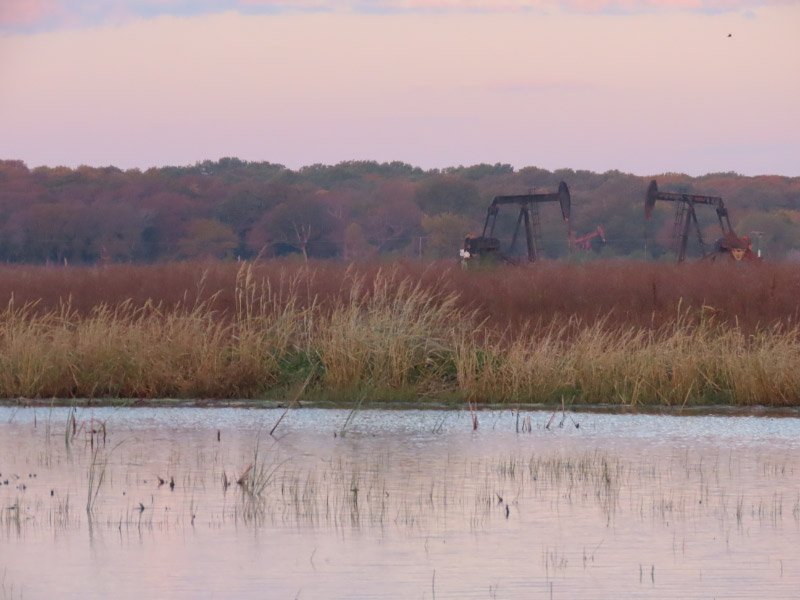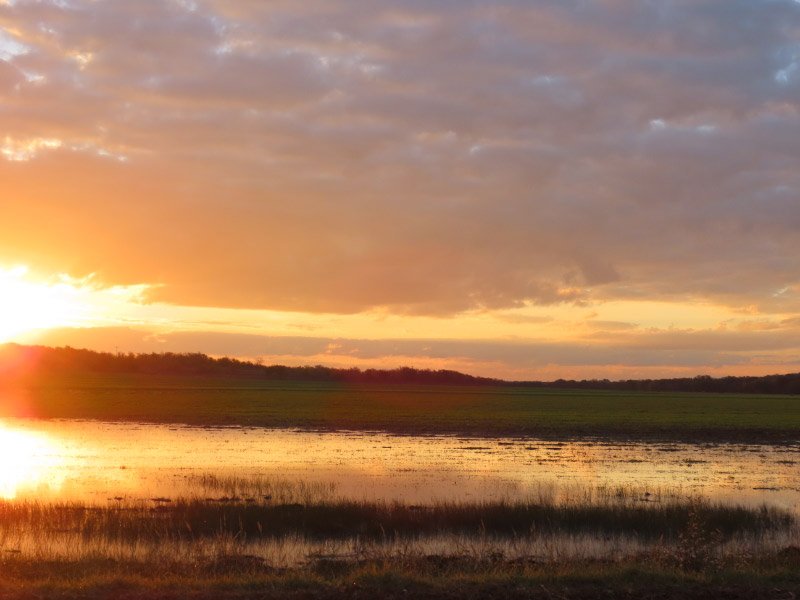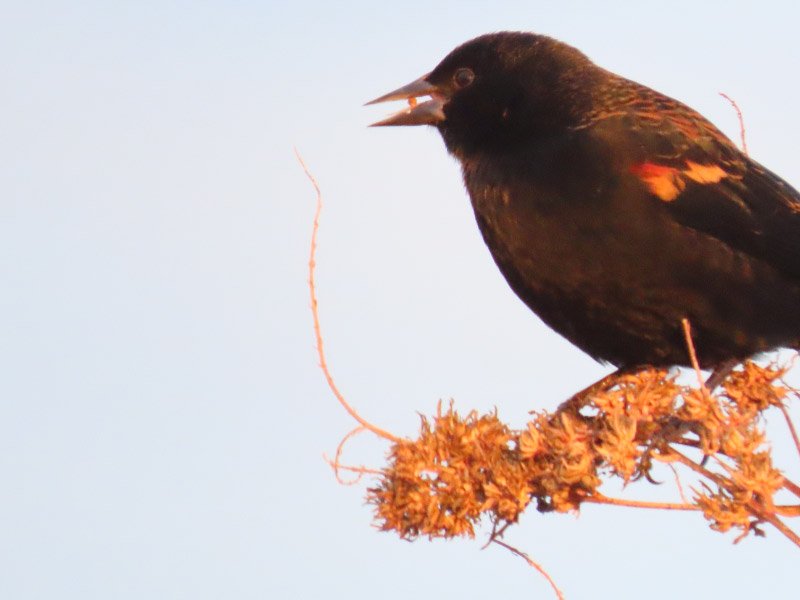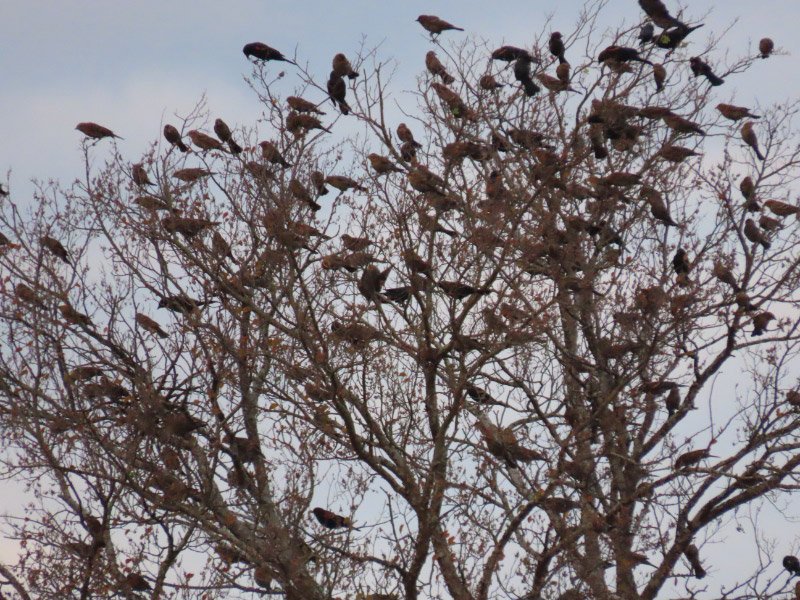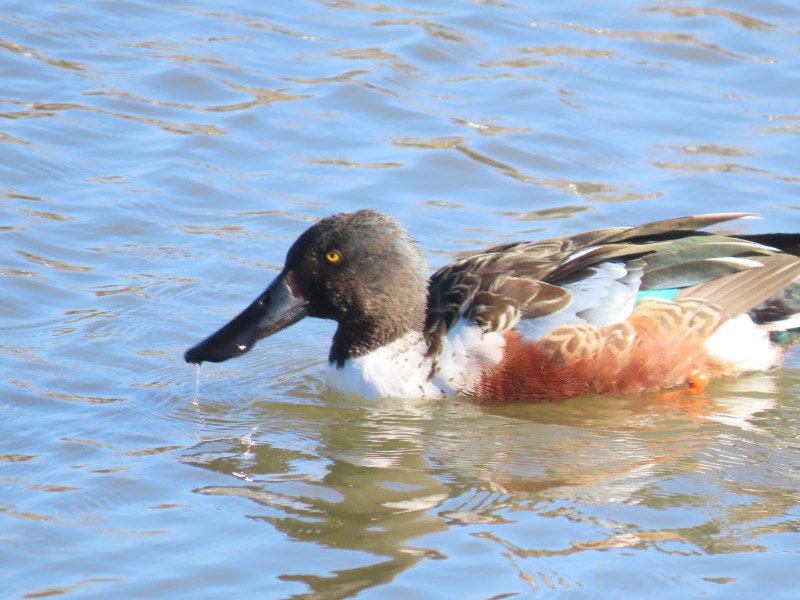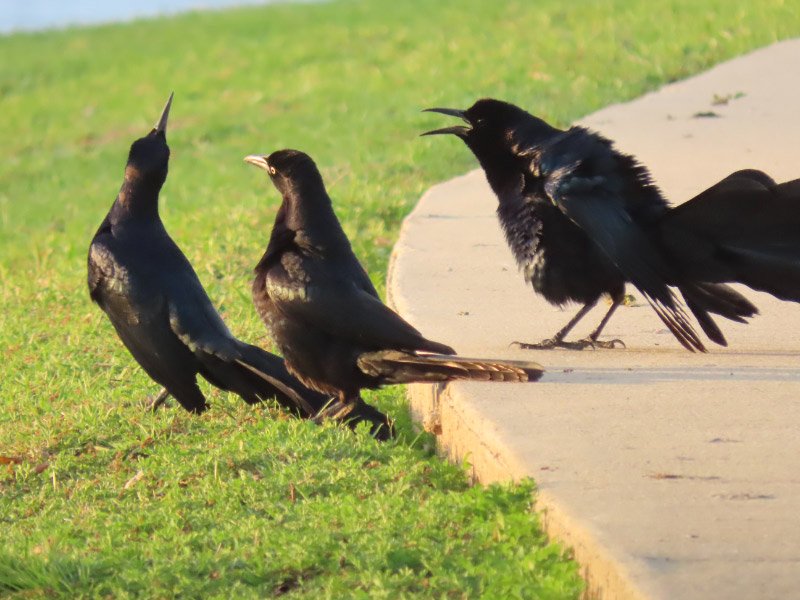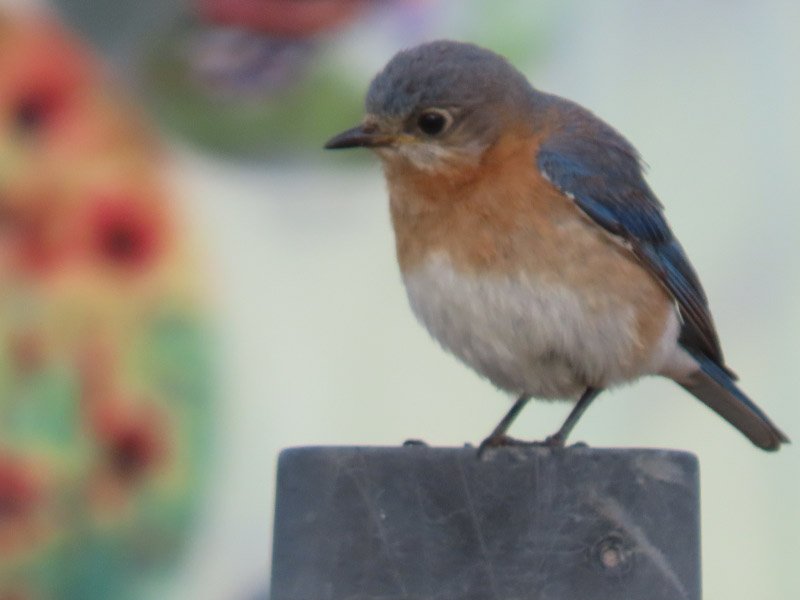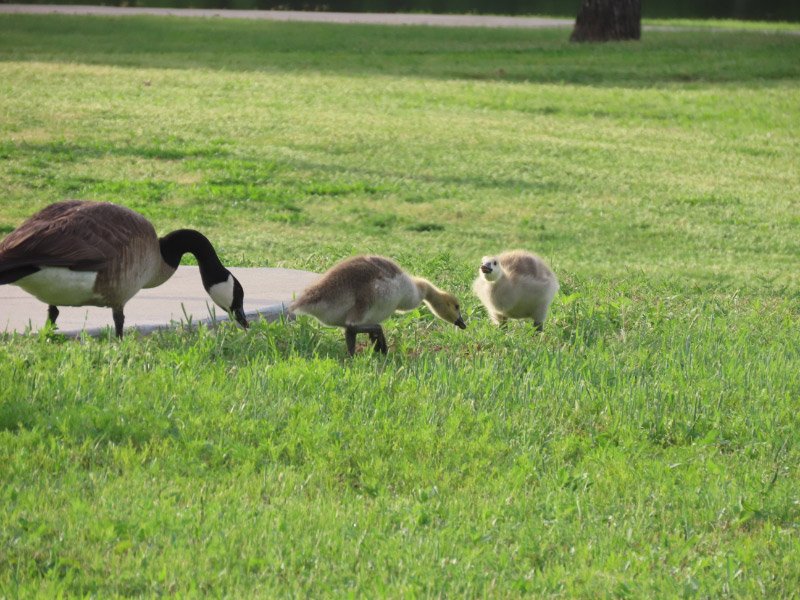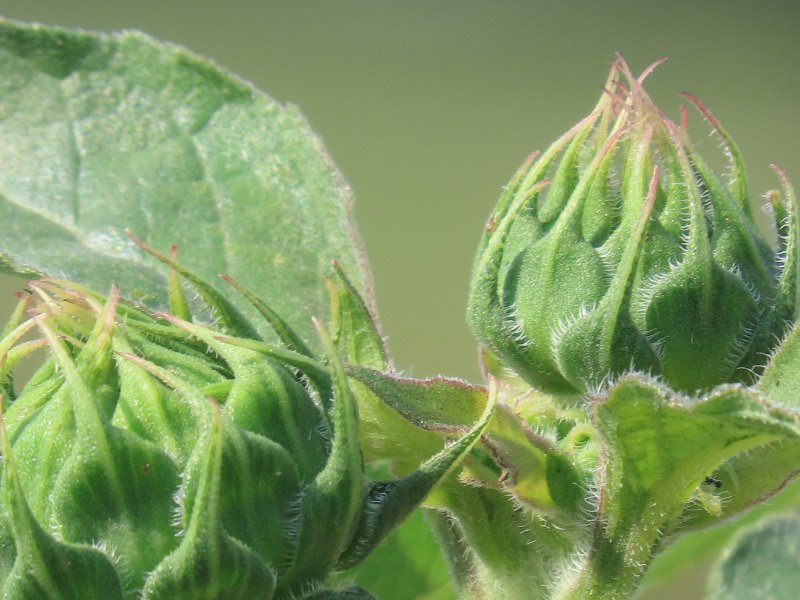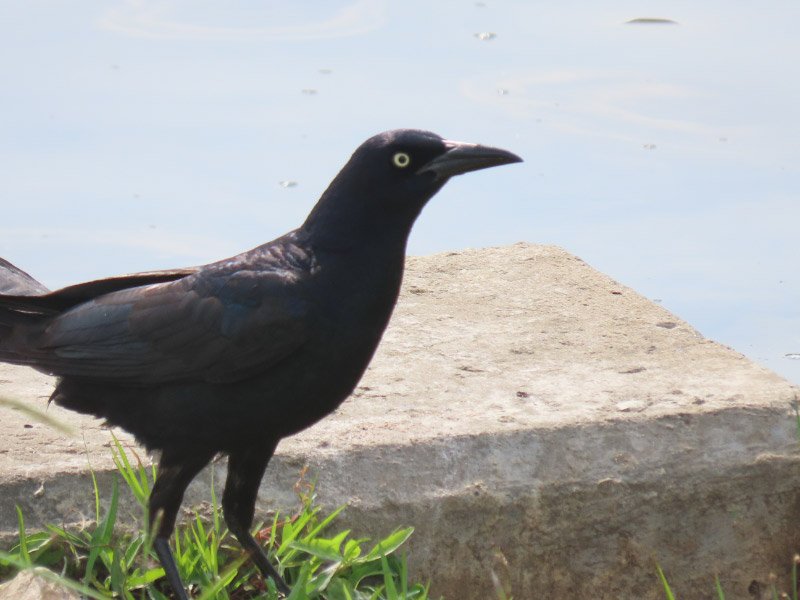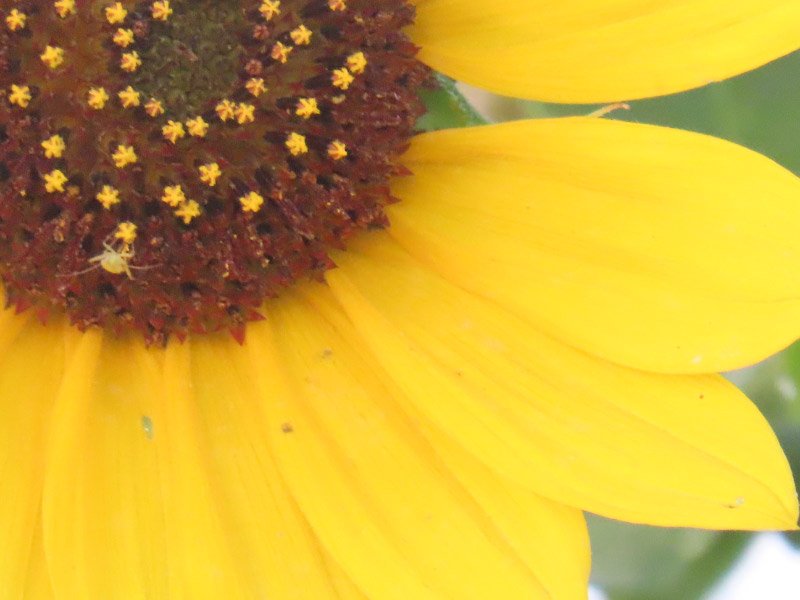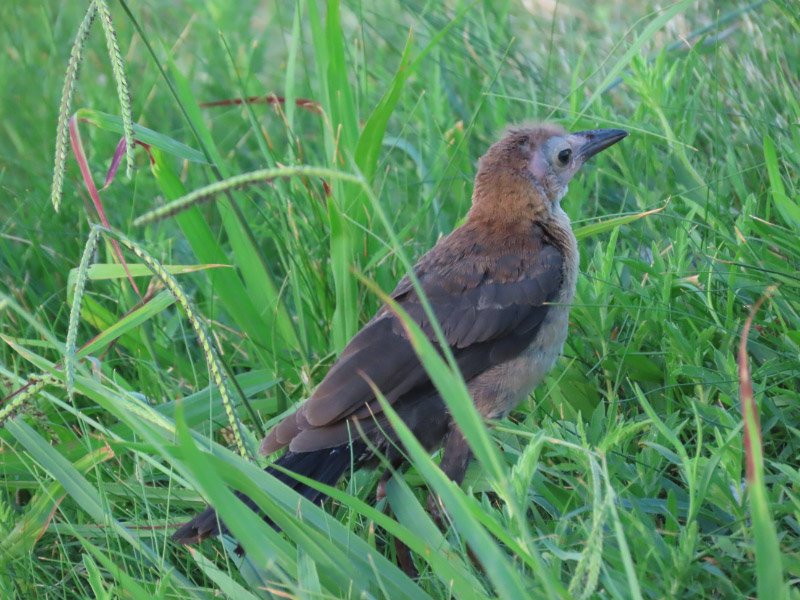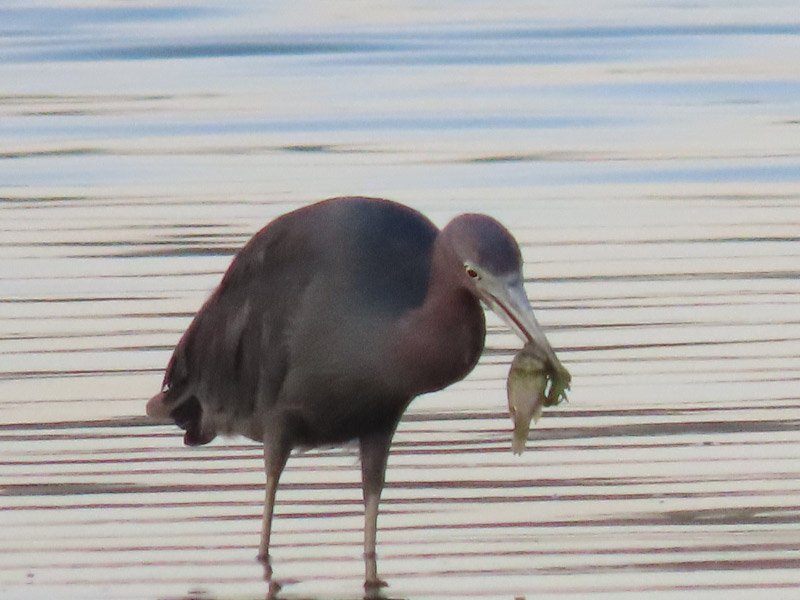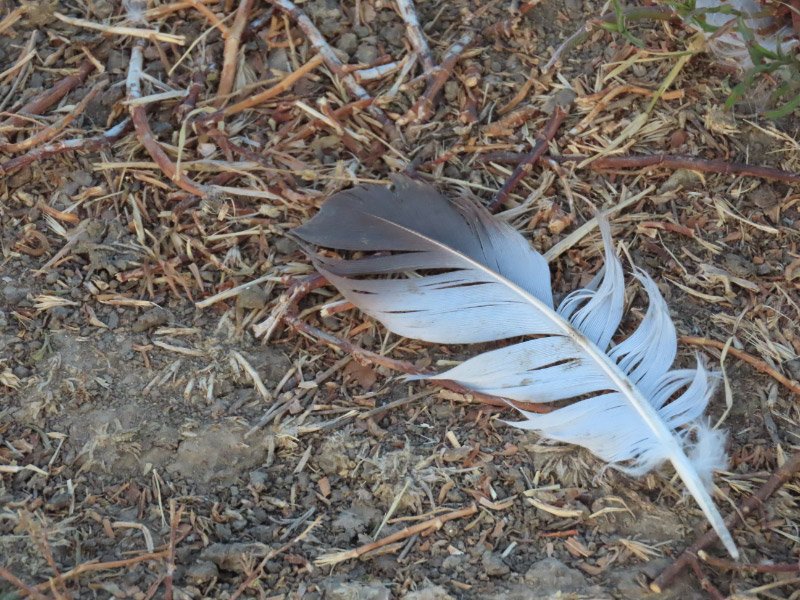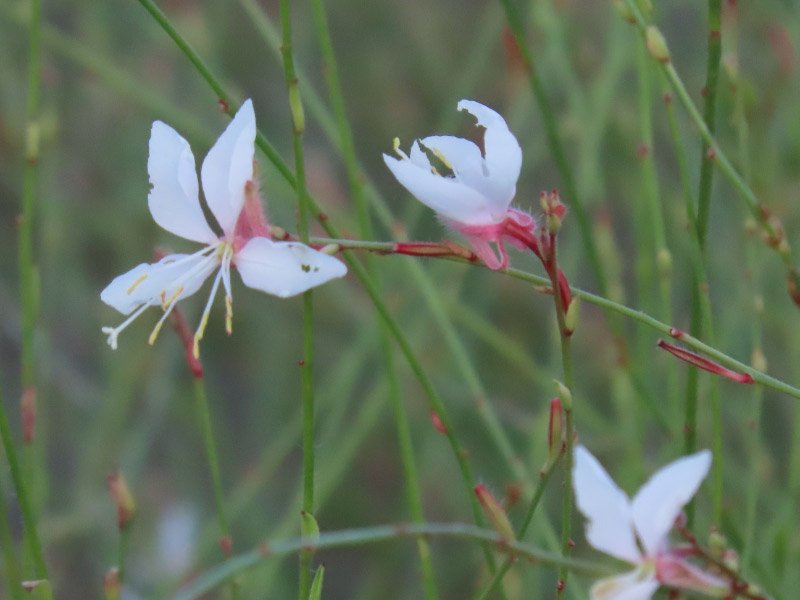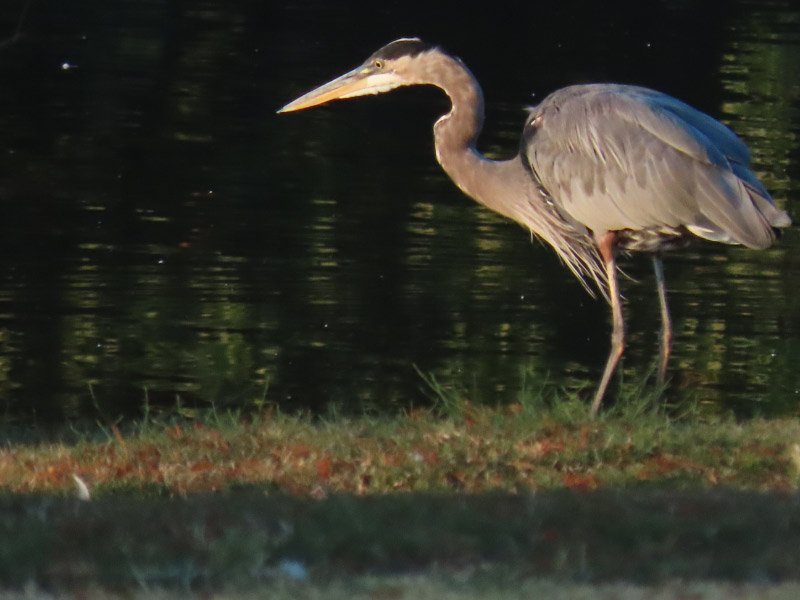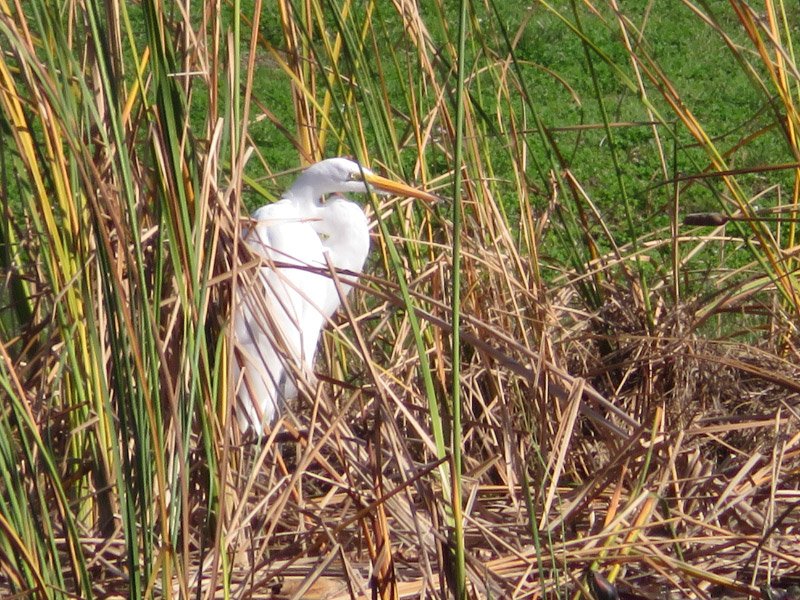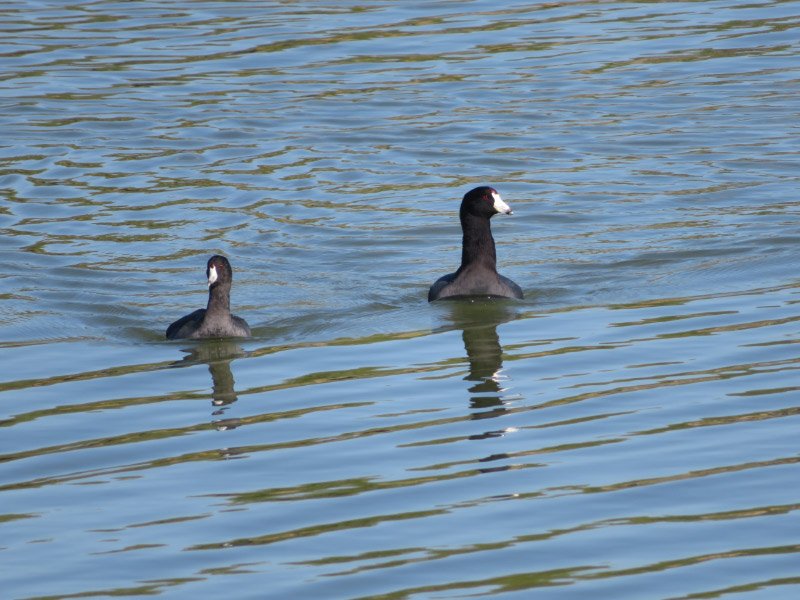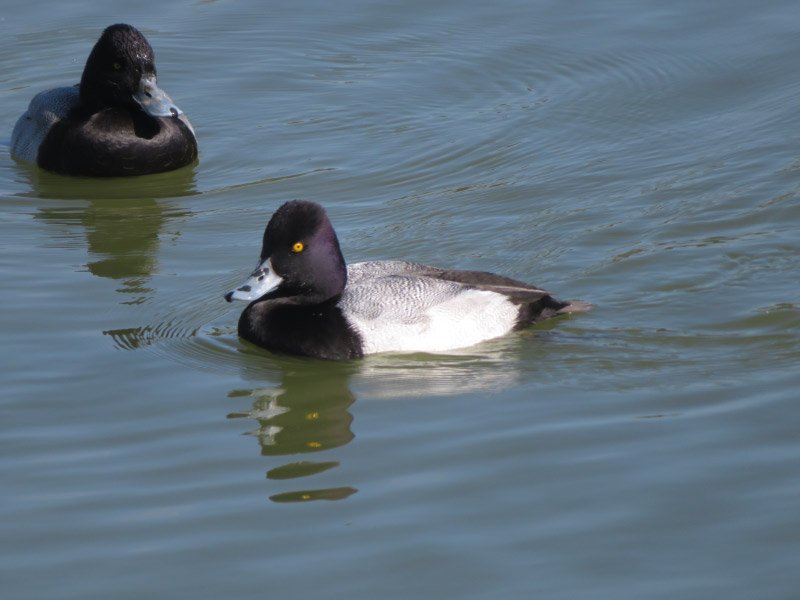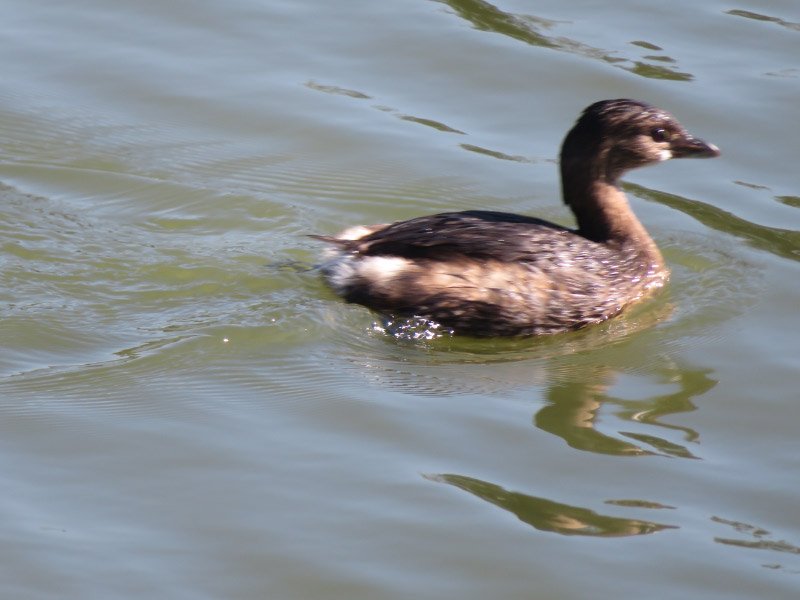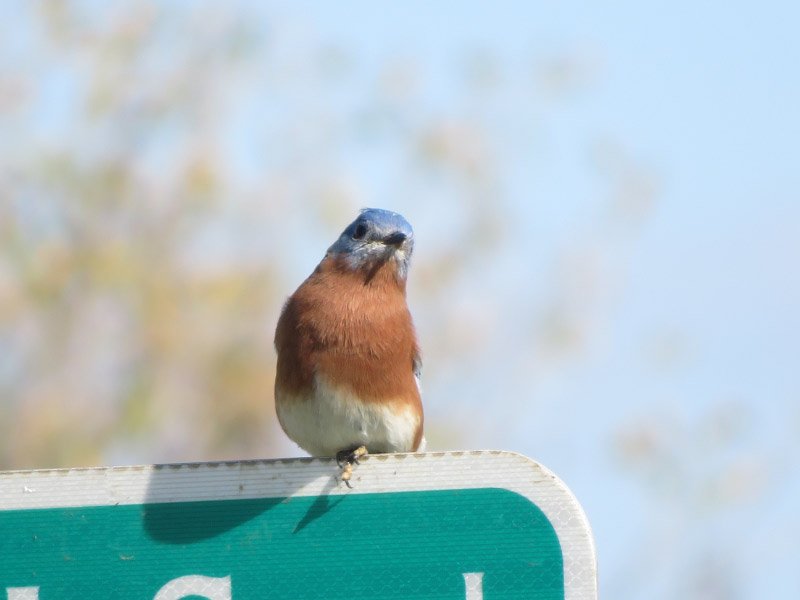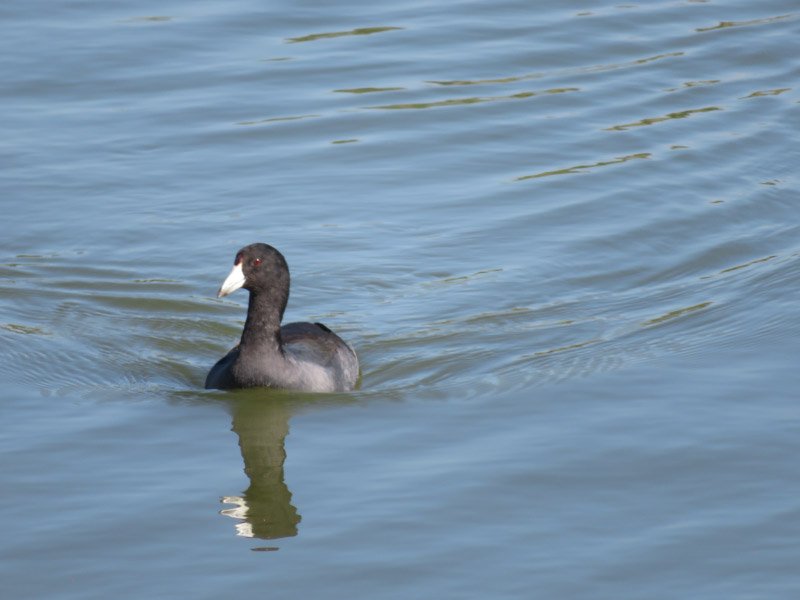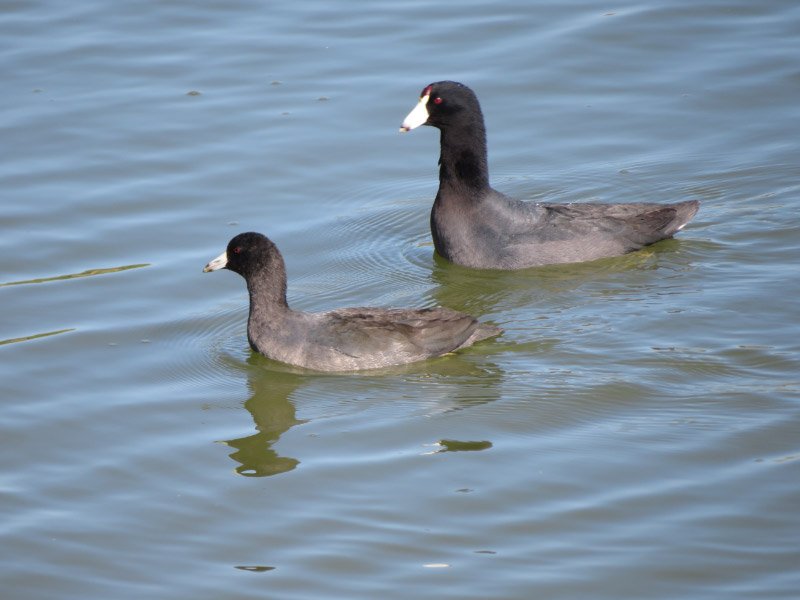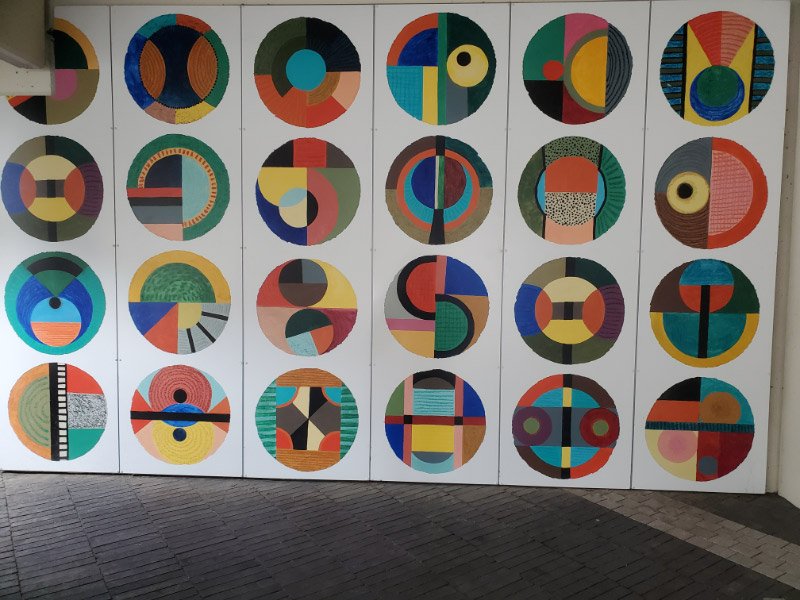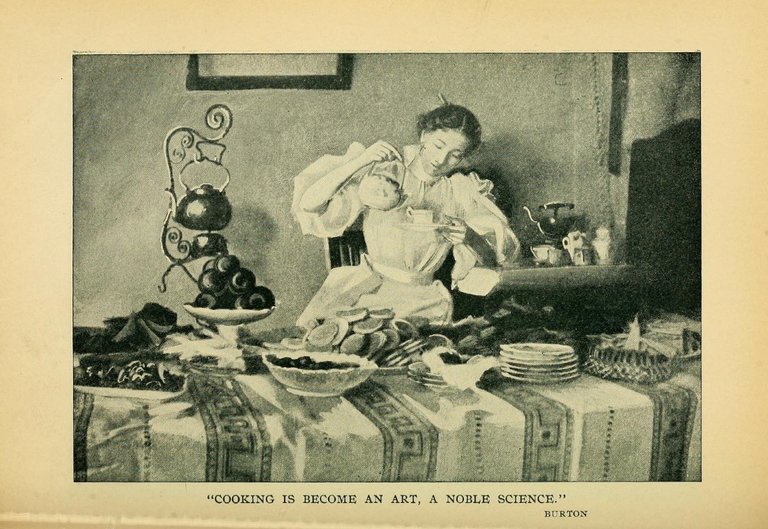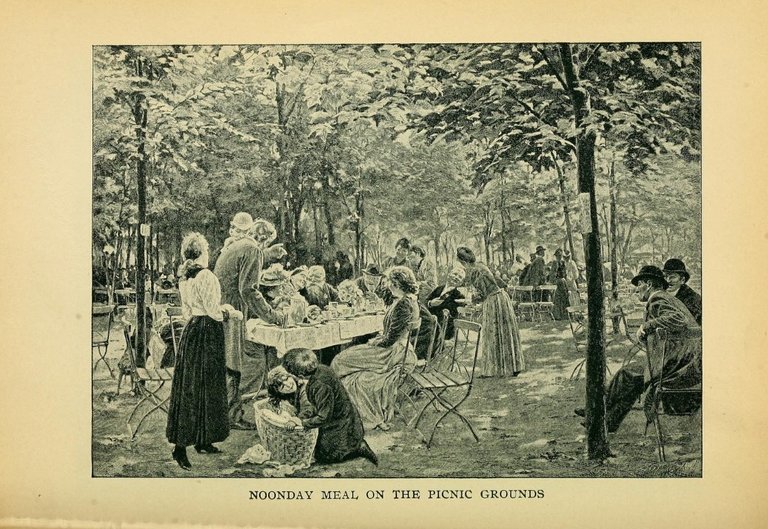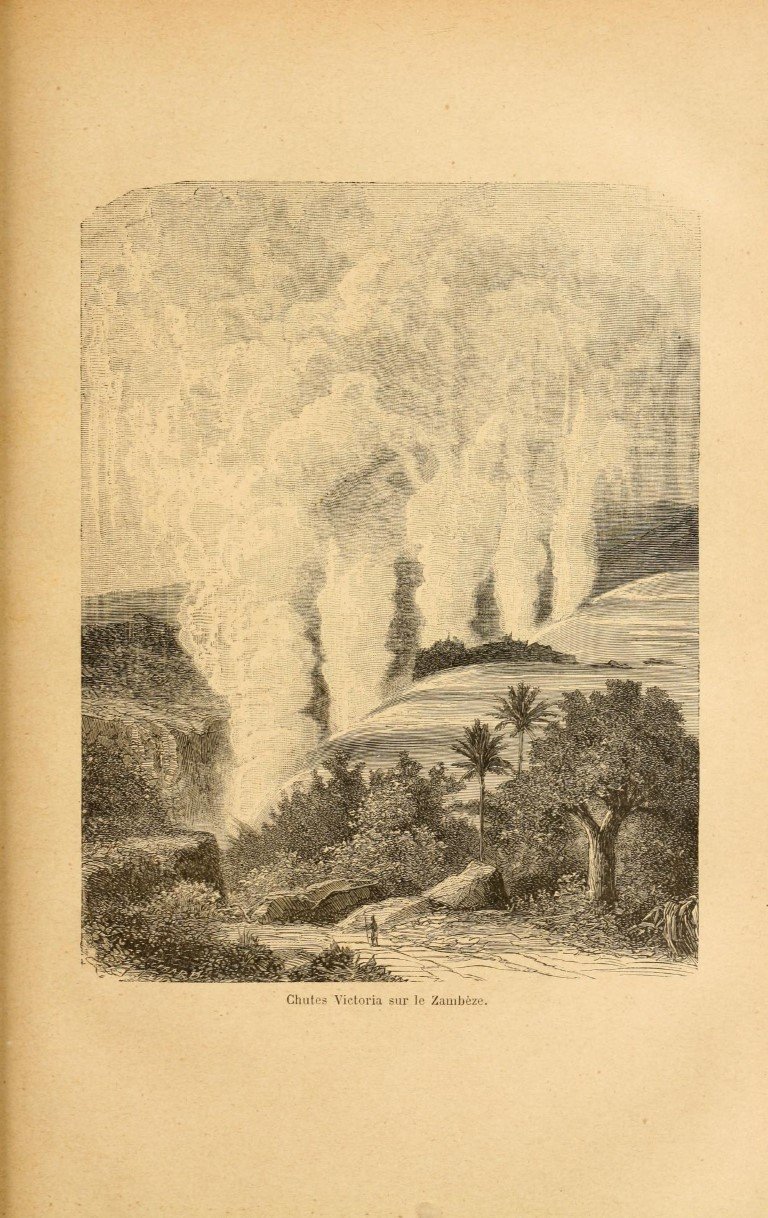Construction in the Carrollton Yard
/My parents’ neighborhood is getting a refresh of infrastructure (water, sewer). Streets, sidewalks, and alleys are being repaved too. There was a notice taped to the door shortly after Thanksgiving about a mini-project replacing a sewer line that ran along their property line (from street to alley) and it started a few days later. They estimated it would take 3-4 days. They started before 8 on the 1st morning.
We watched the big equipment remove half the sidewalk in front and then dig a big hole where the old manhole cover had been at the edge of the yard….at the edge of the bed with red yuccas. The construction would use a pipe bursting technique (which we never did fully understand) so that only a hole at both ends of the pipe would be required (i.e. no long trench).
They discovered that the sewer connection for my parents’ house and the house next door was not on the alley end of the sewer line as expected. They put a camera through the pipe to determine where the connections were…and communicated with us about where they would dig in the yard. Fortunately, it was a small part of a flower bed near the fence and then a grassy area that was not included in the sprinkler system. (They told me a story of a similar situation elsewhere in the neighborhood where they had discovered a connection that was directly under a big tree….not sure how they resolved that one.)
We were able to get bulbs/rhizomes (spider lily and iris) out of the flower bed that would be disturbed by the hole in the yard before it was dug on the 2nd day. The bulbs/rhizomes that are now in buckets and bins will be planted in my garden in Missouri!
The hole in the yard was done carefully to reduce damage to the yard. A panel of fence was removed to allow entry of a smaller machine to dig the hole and a tarp was spread over the grass where the dirt pile would accumulate. Within 24 hours – the hole was made, connections were made, the hole filled, and iris rhizomes that had been disturbed (that we hadn’t gotten out previously) were replanted in neat rows by the crew!
Also on the second day – they put the new concrete pipe (where the manhole cover would be) into the ground. It was impressive how the crew aligned everything, chains were attached to the pipe and the big arm of the machine what would lift it and set it down perfectly into place.
The crew seemed to be in a very good mood as they filled the hole. The man in the big backhoe seemed to have a smile on his face every time the machine swung around where I could see him!
I was left with the impression that the crew has worked together for some time…and they enjoy what they do. They want the project to be successful even if they discover something different than expected and have to tweak the plan to make it so.
I was also impressed with the personnel from the city that made sure we understood what needed to happen. It’s good the city is proactively replacing/renovating the infrastructure in the 50+ year old neighborhood!






